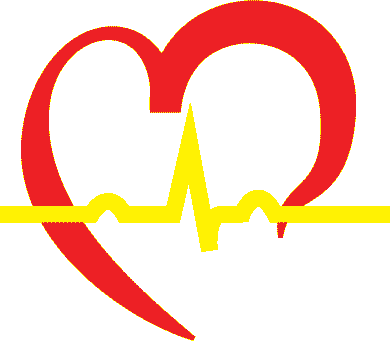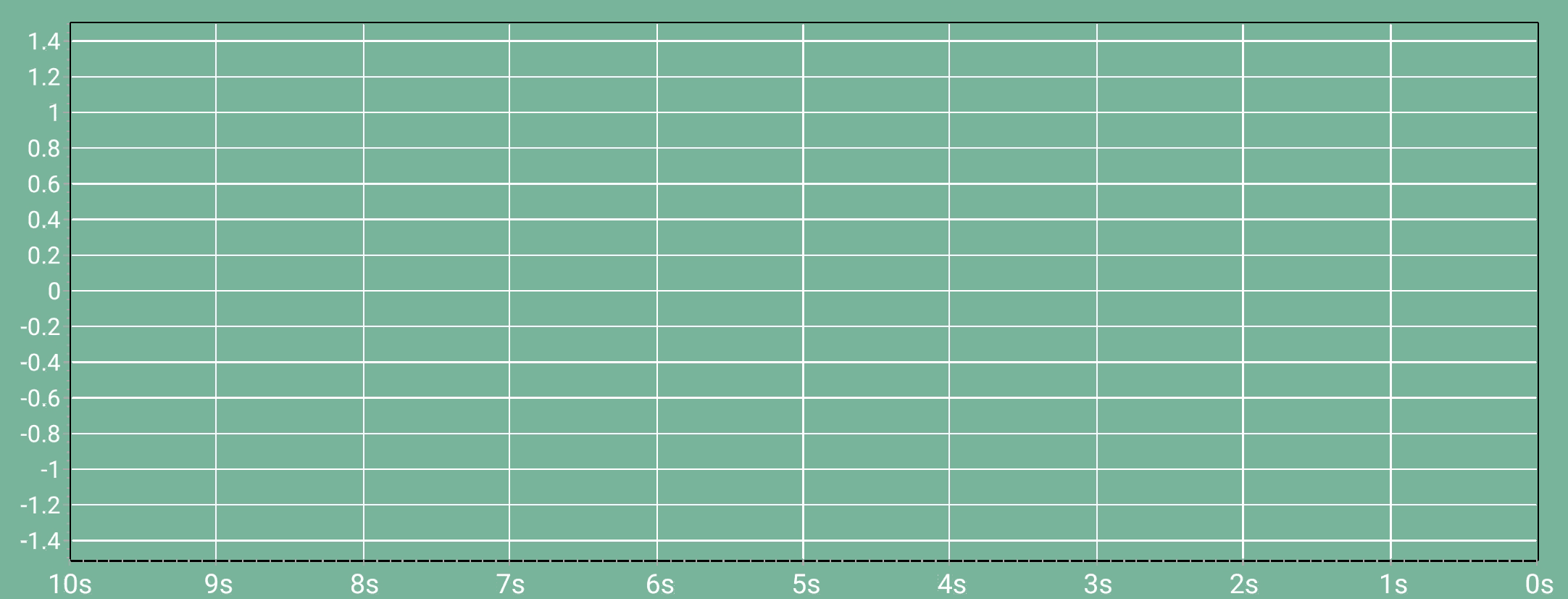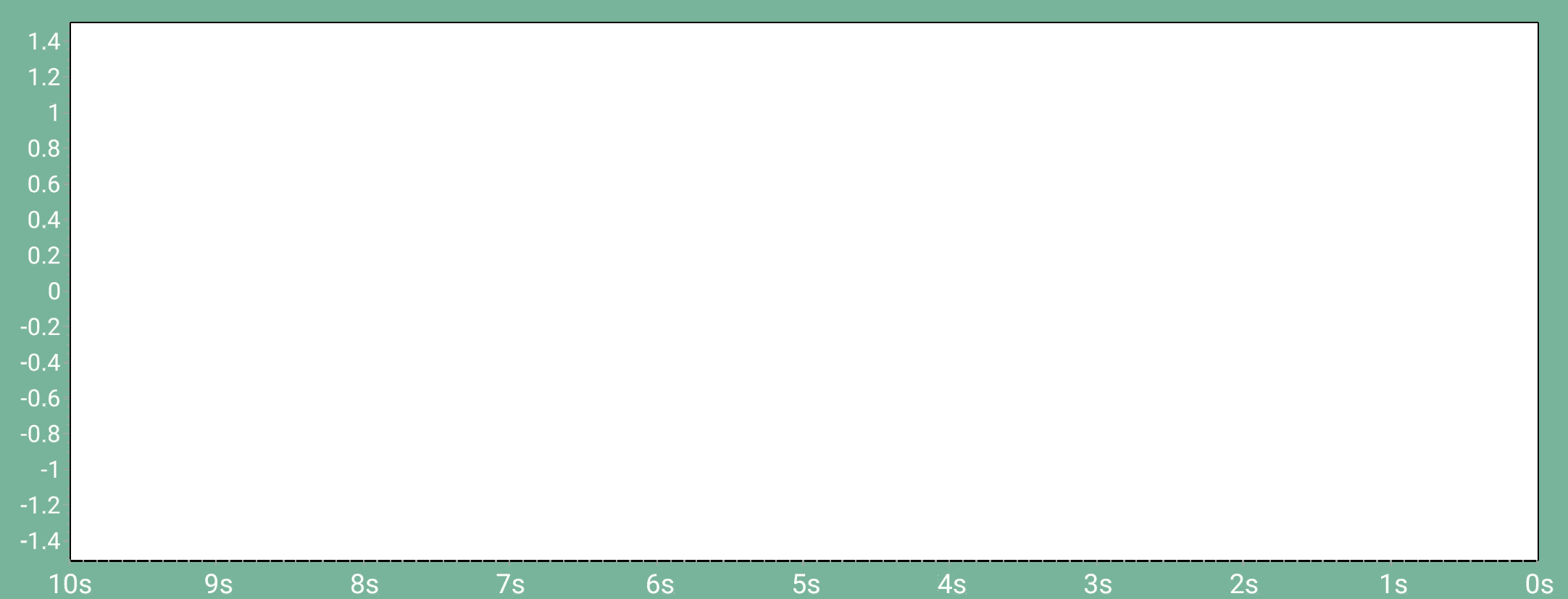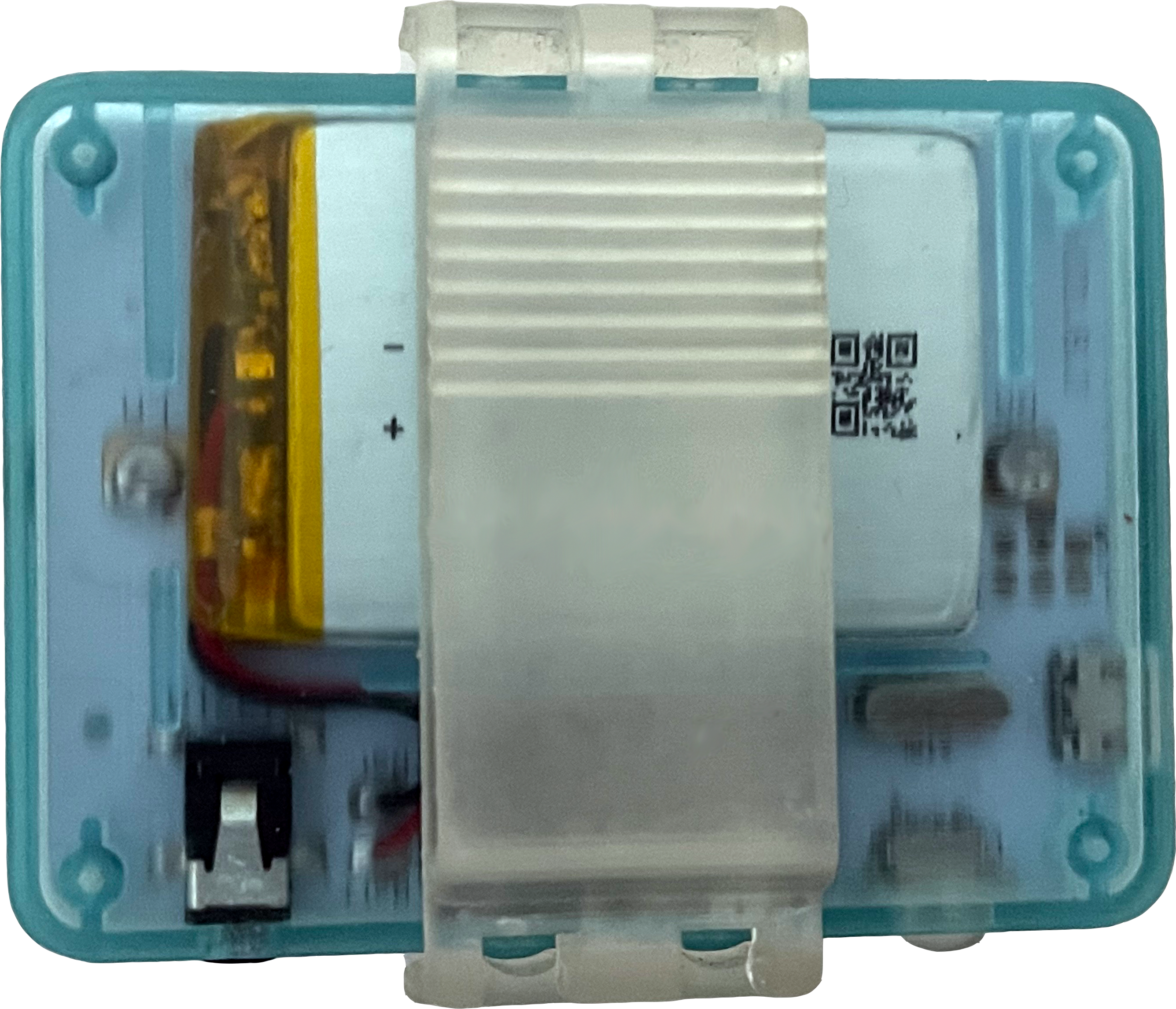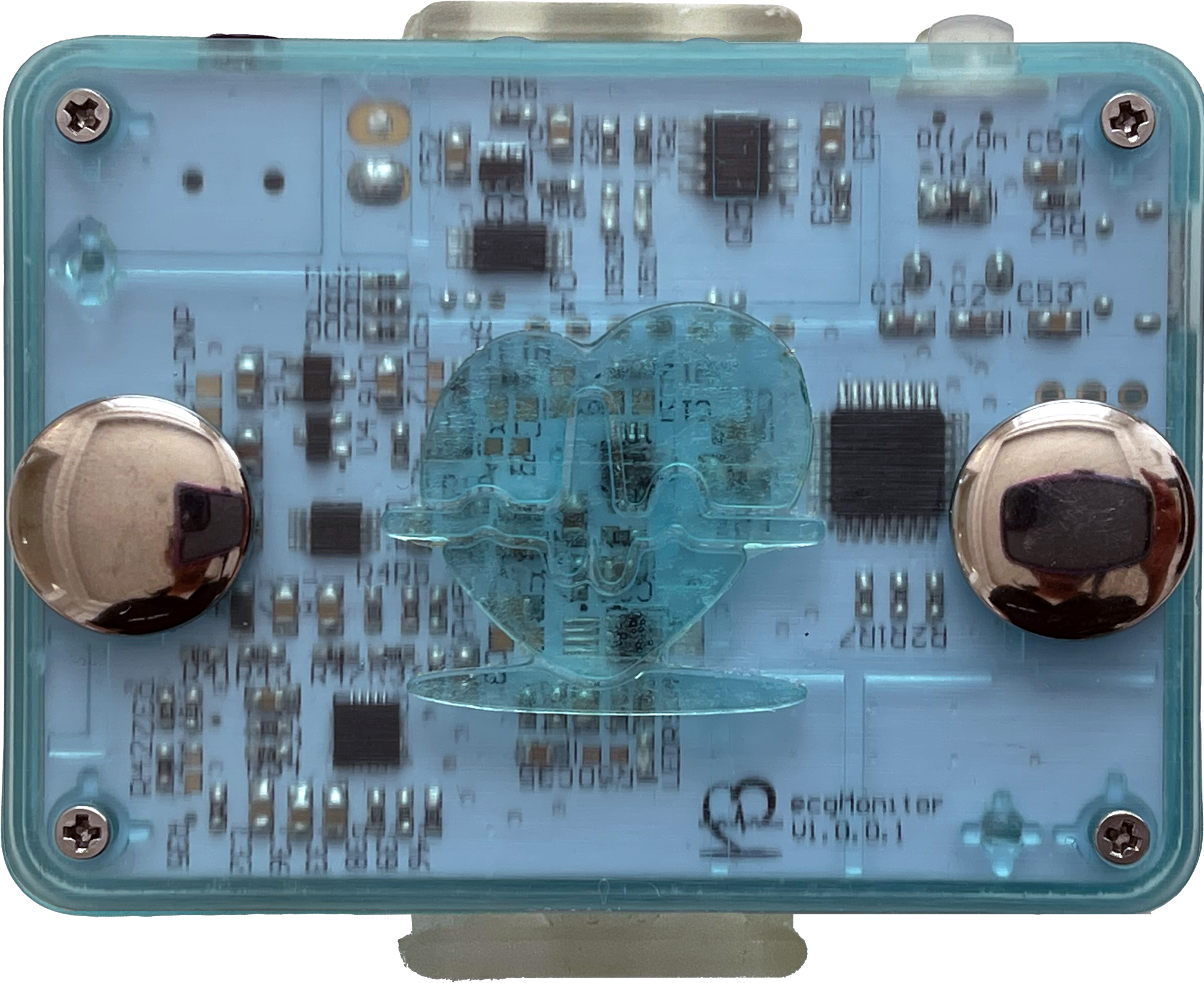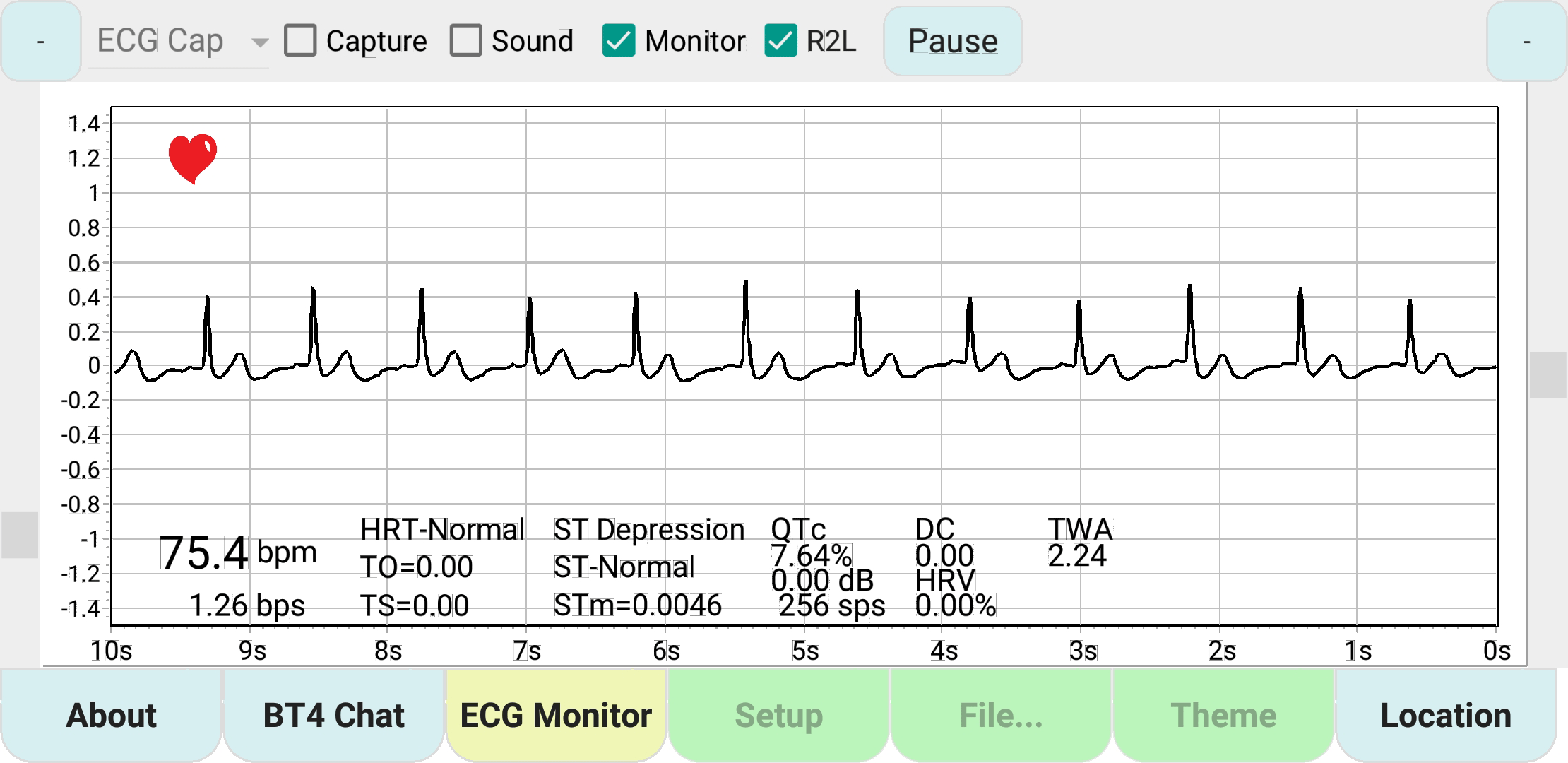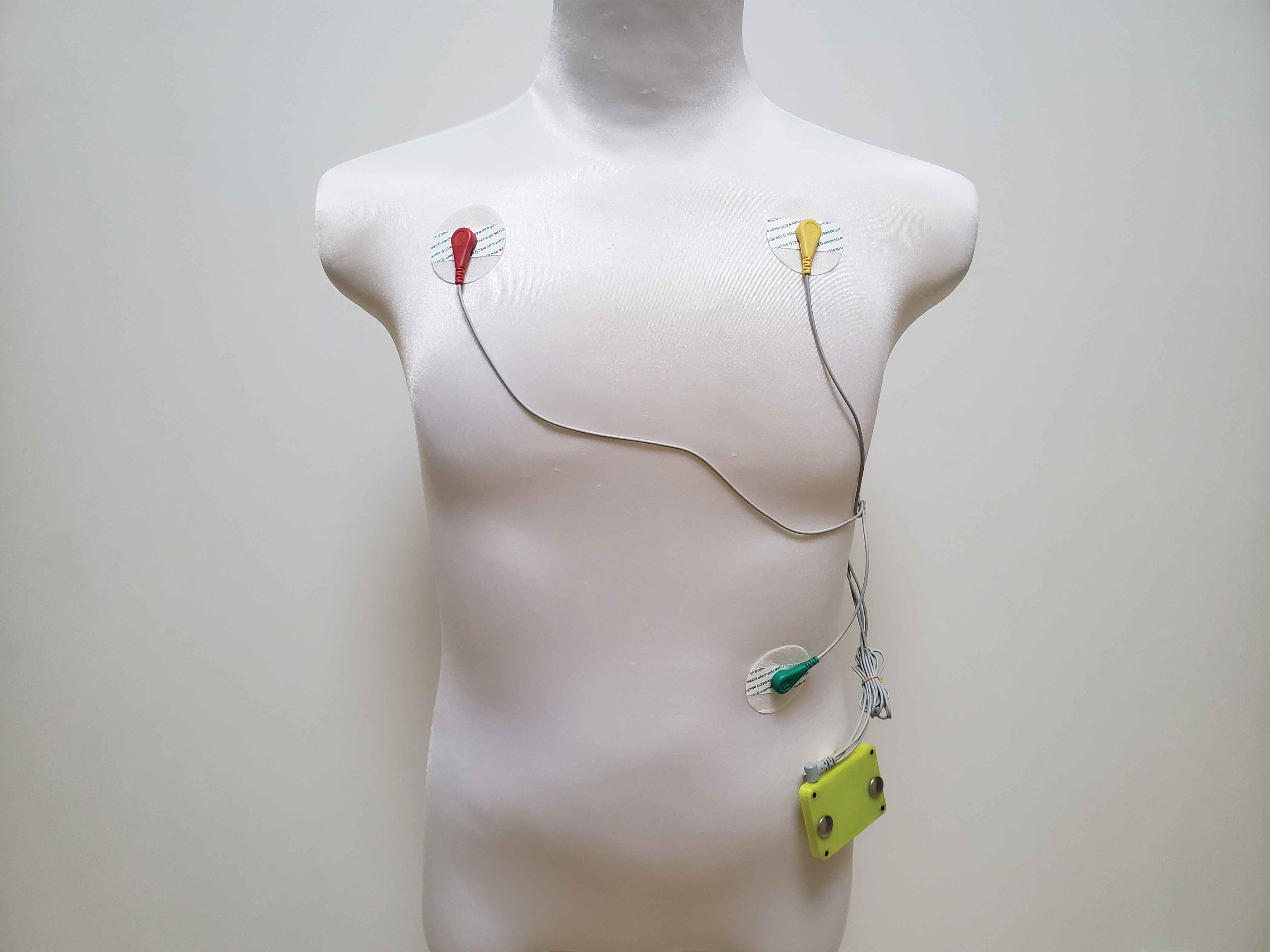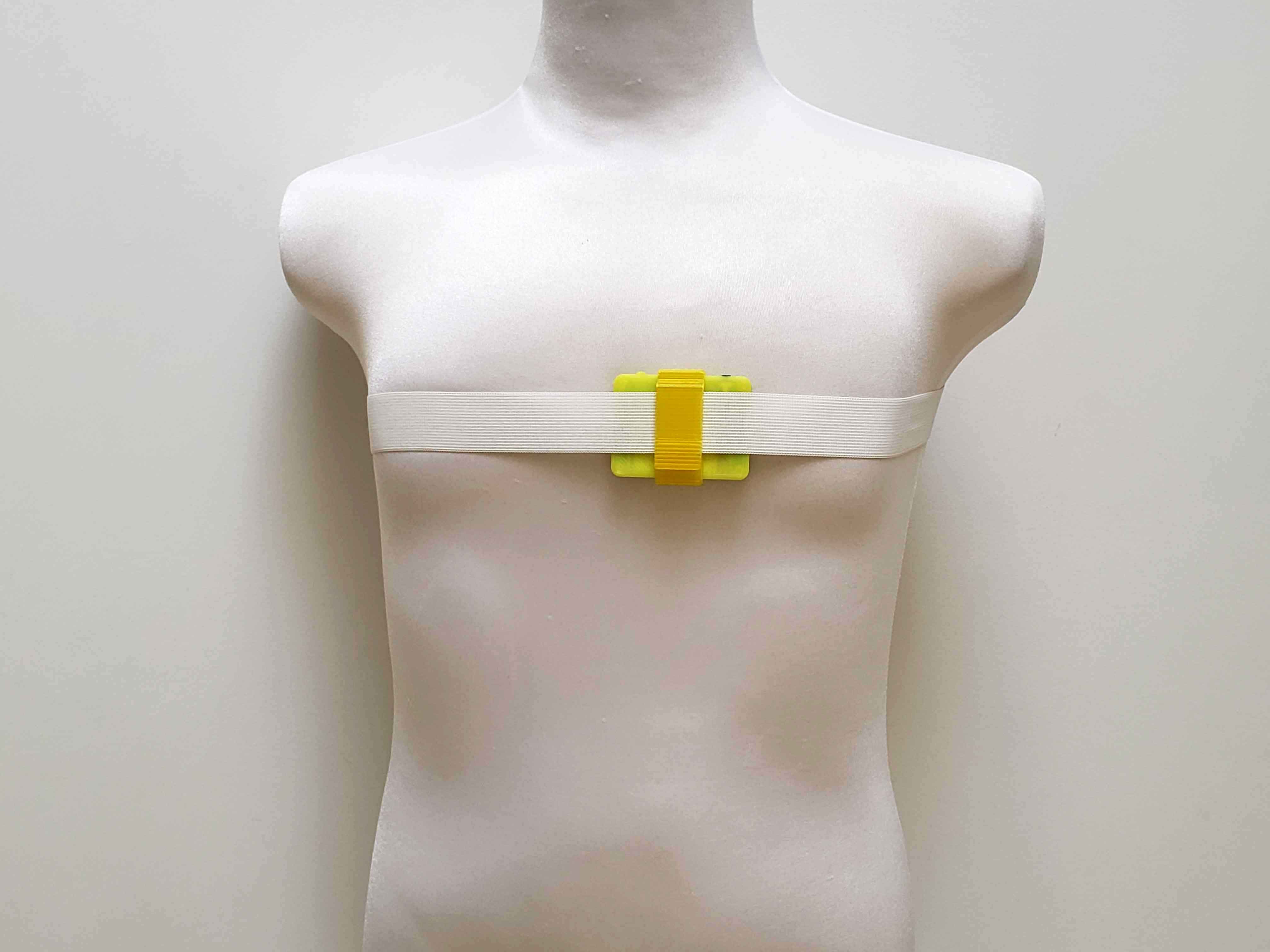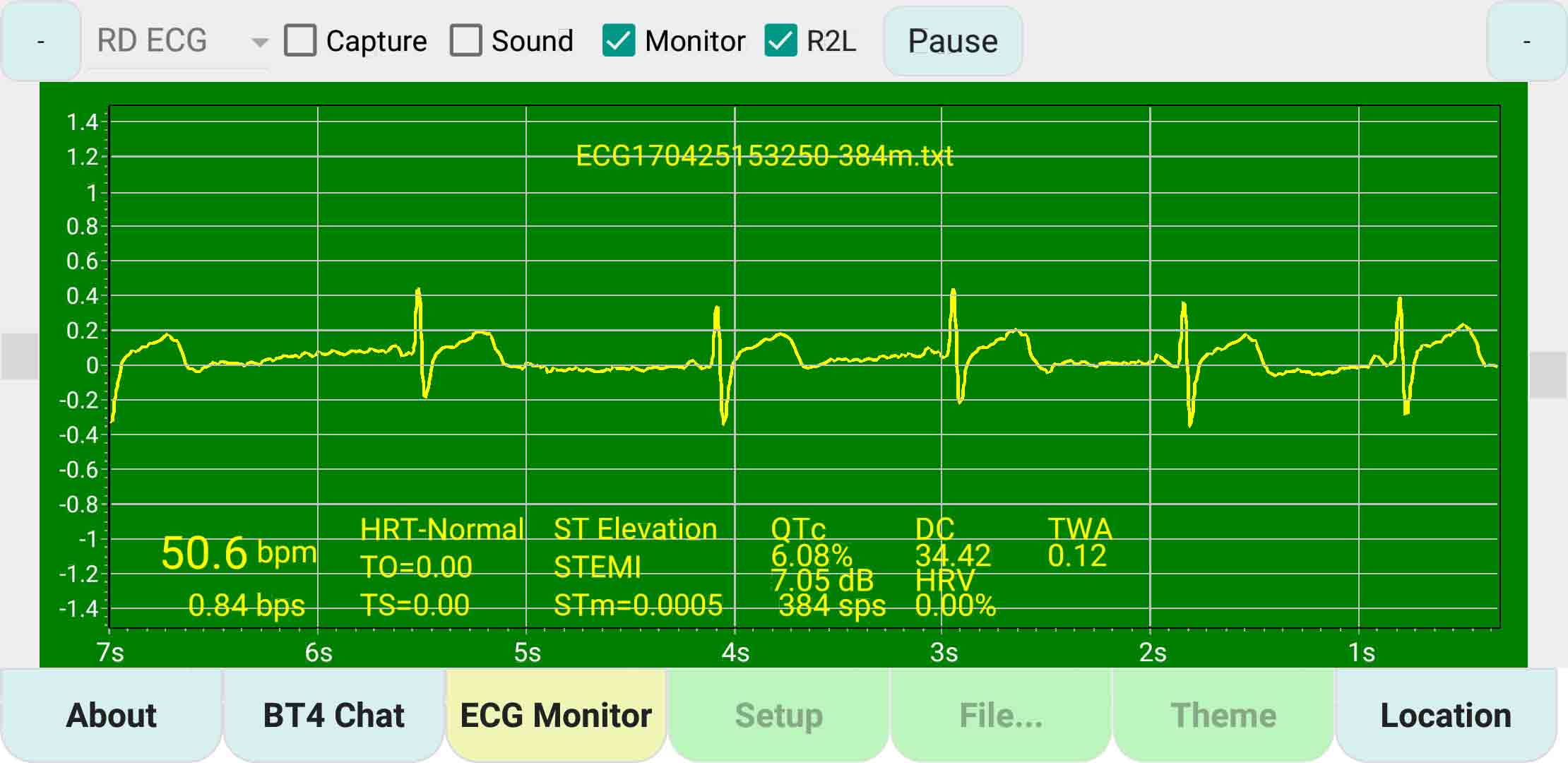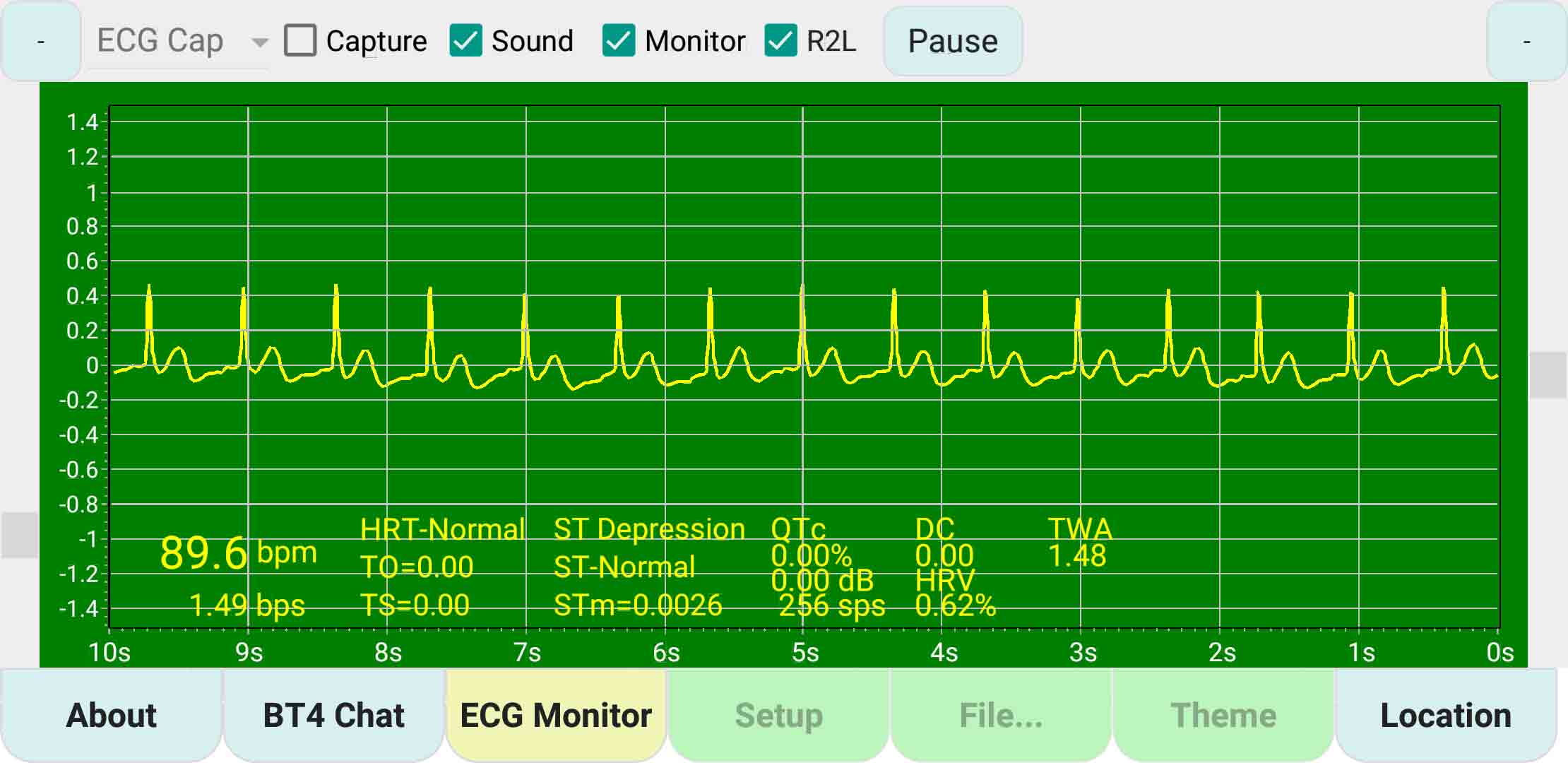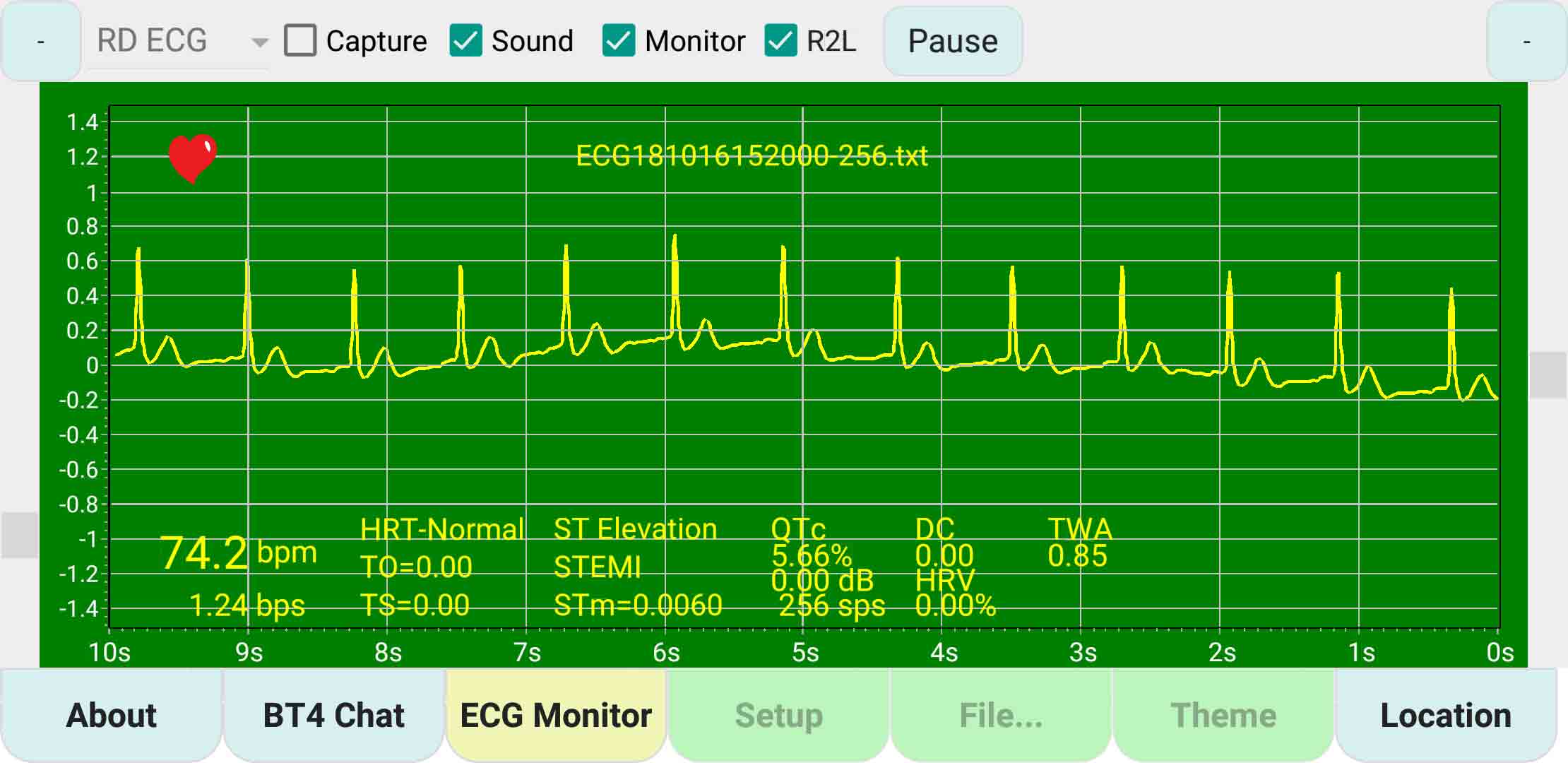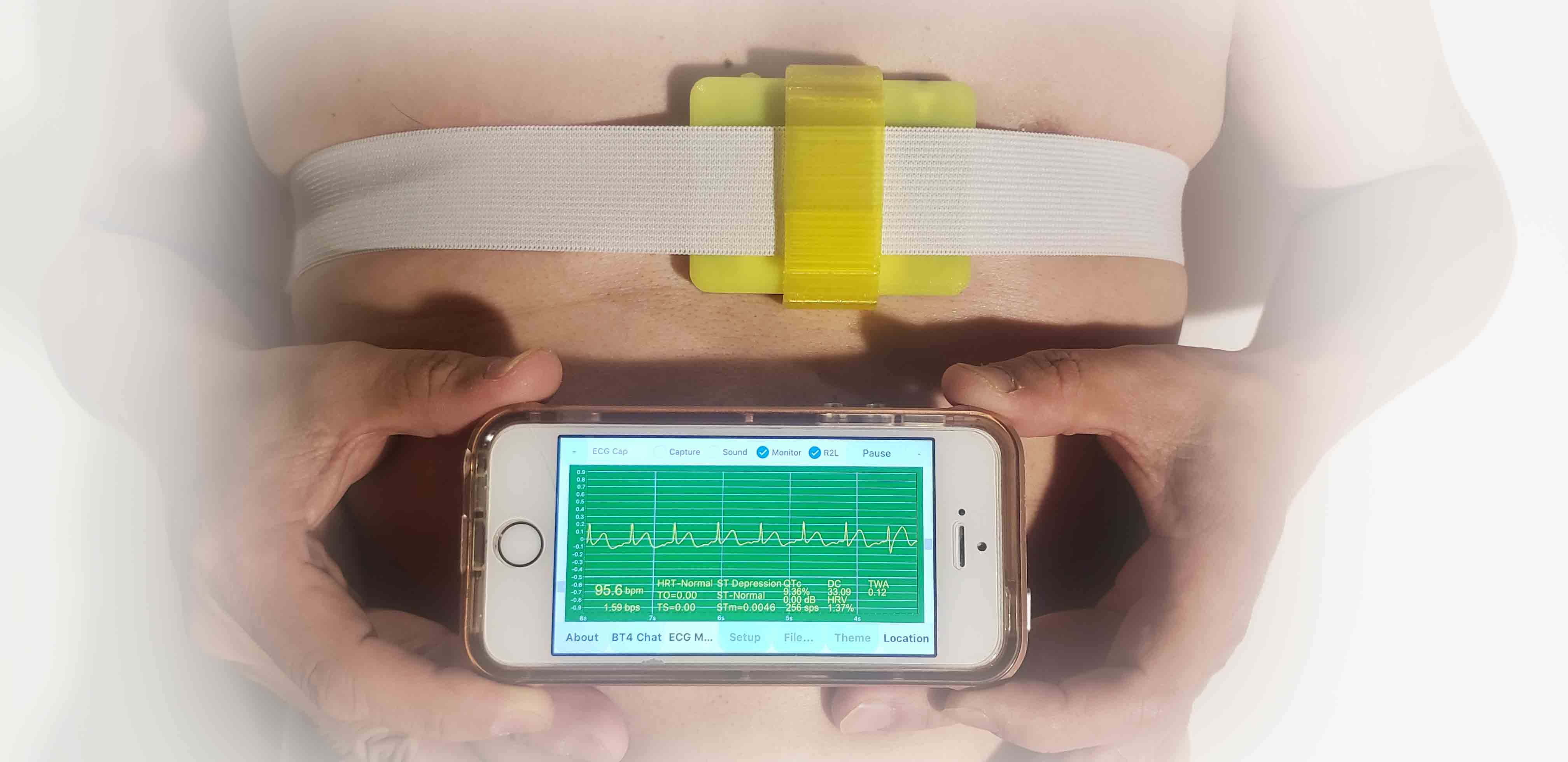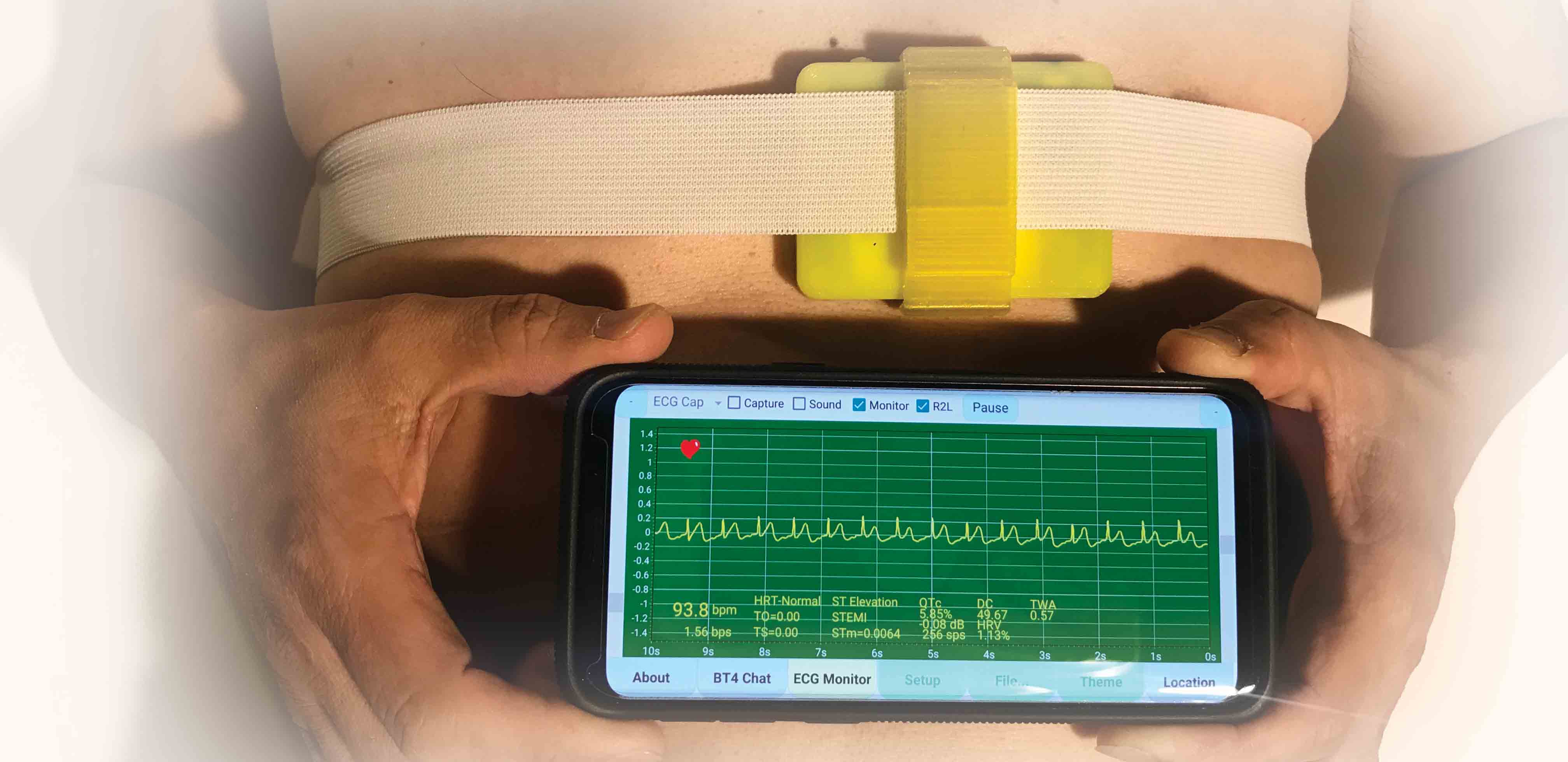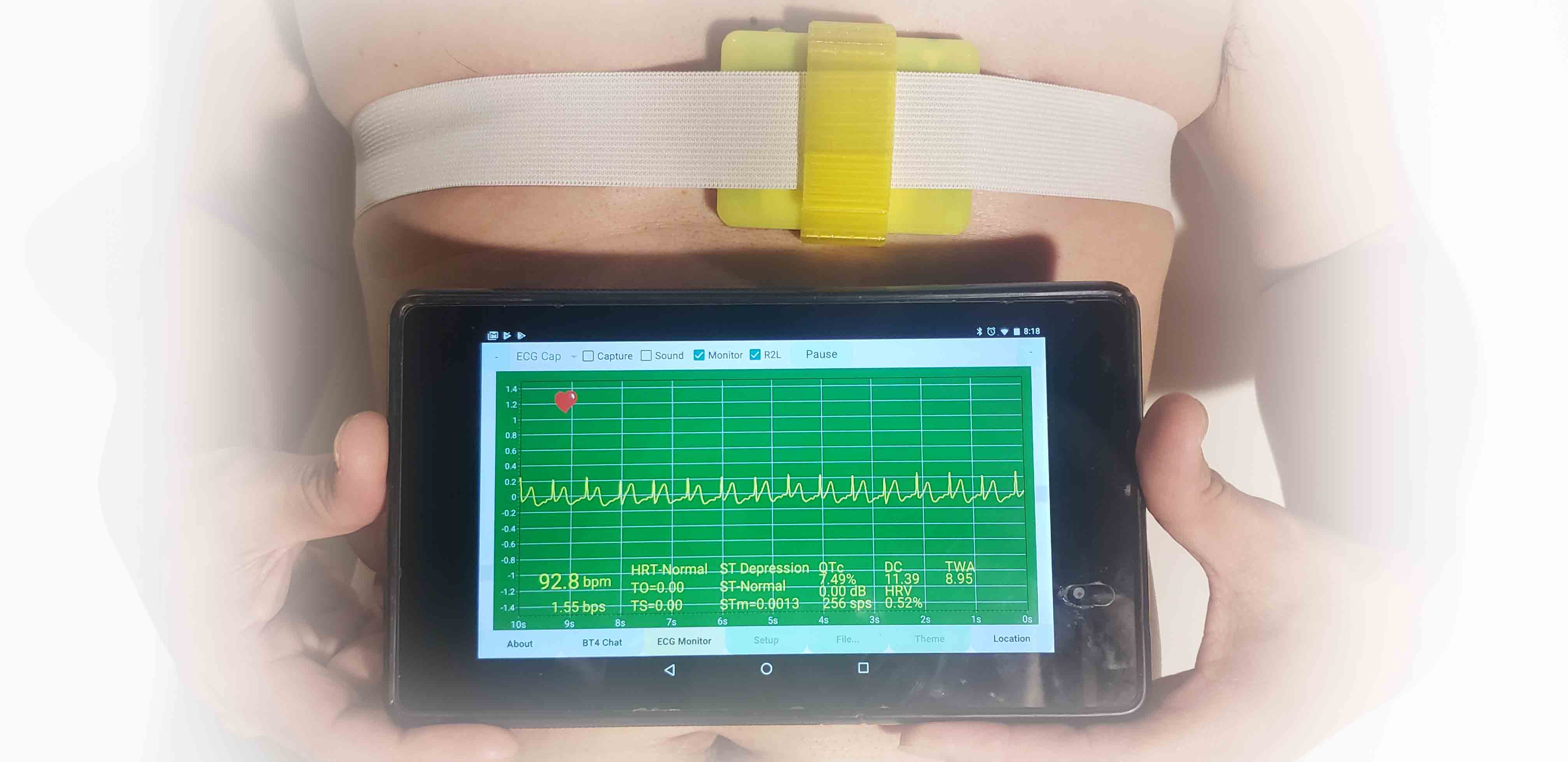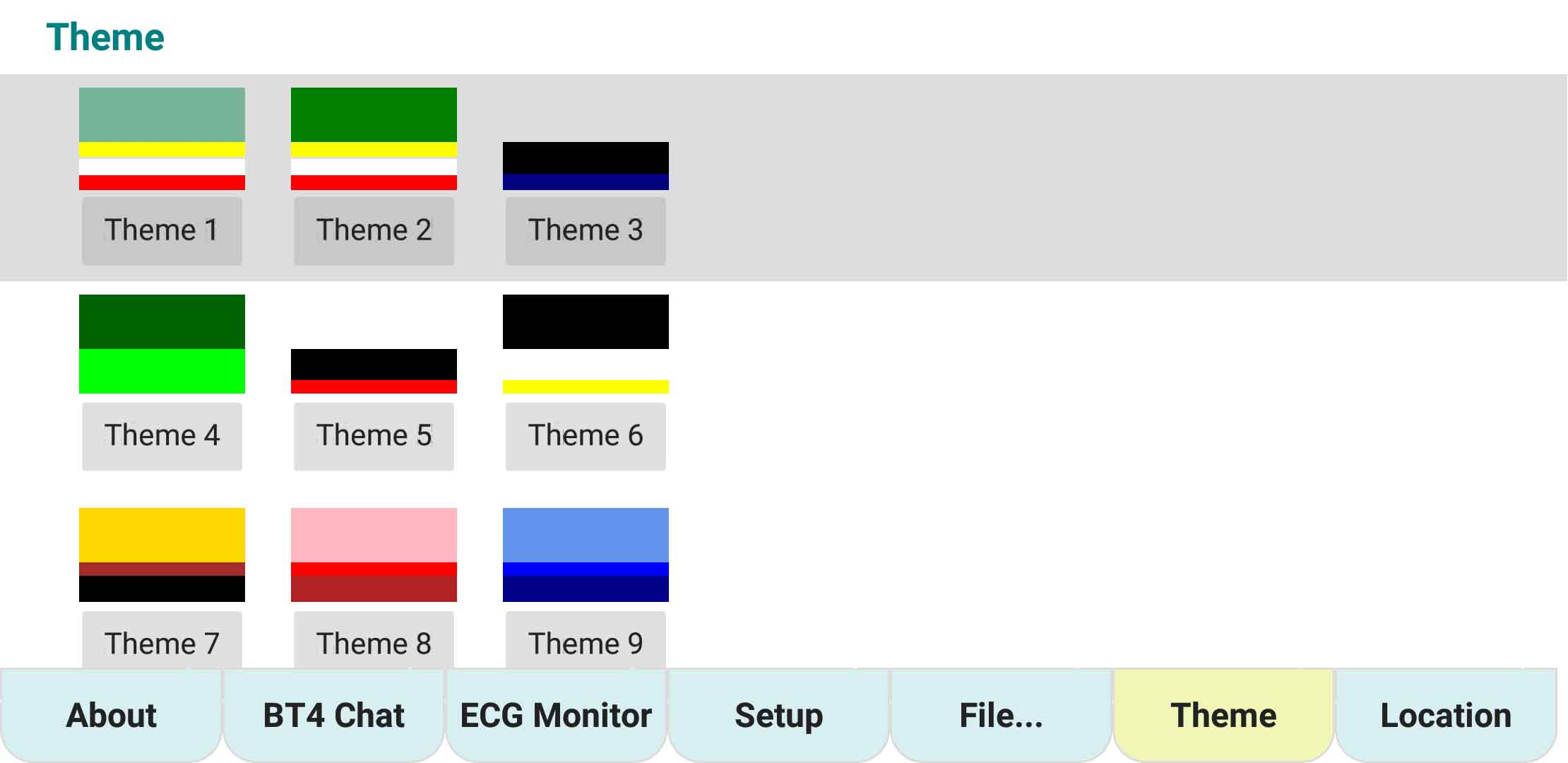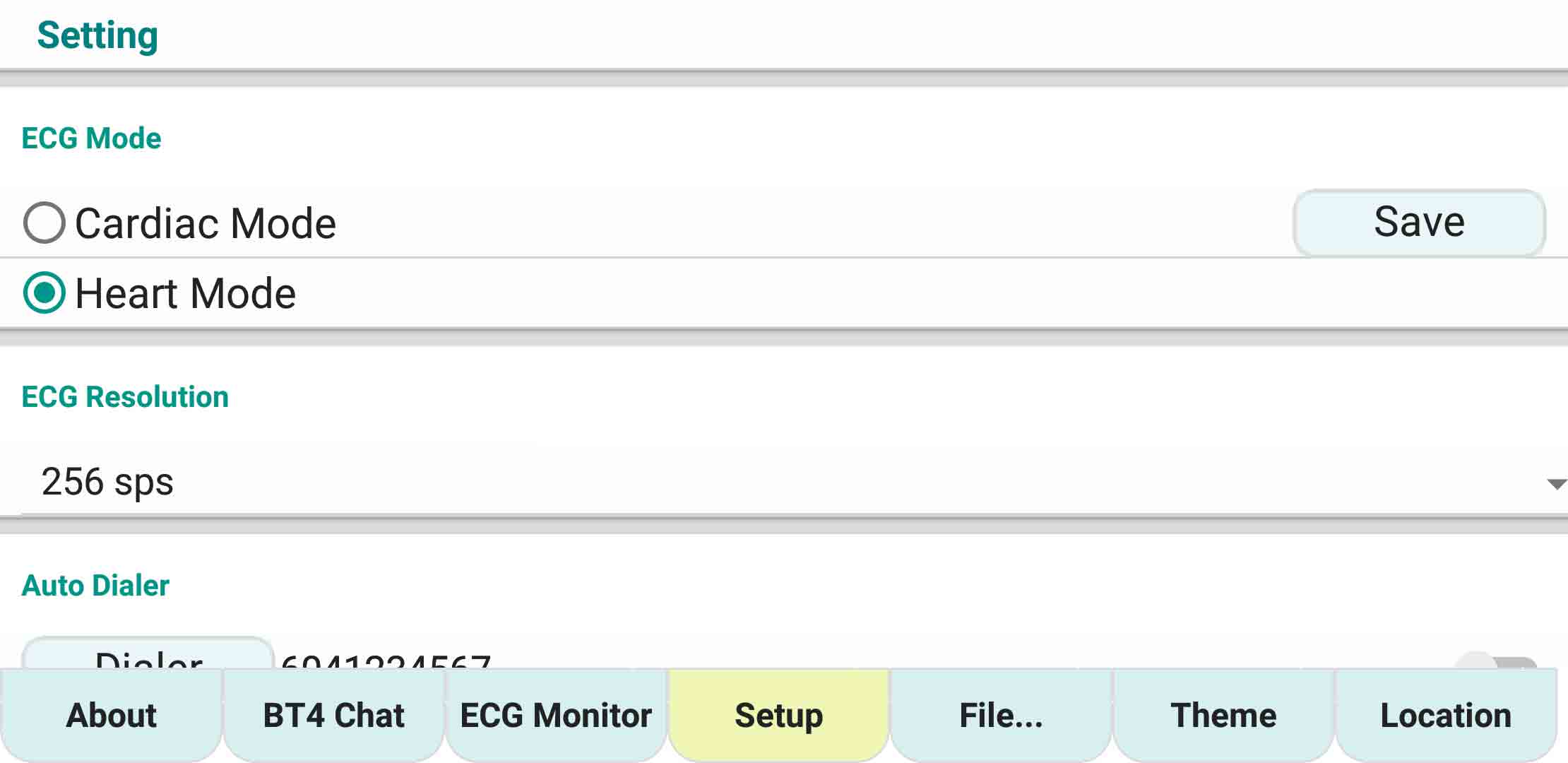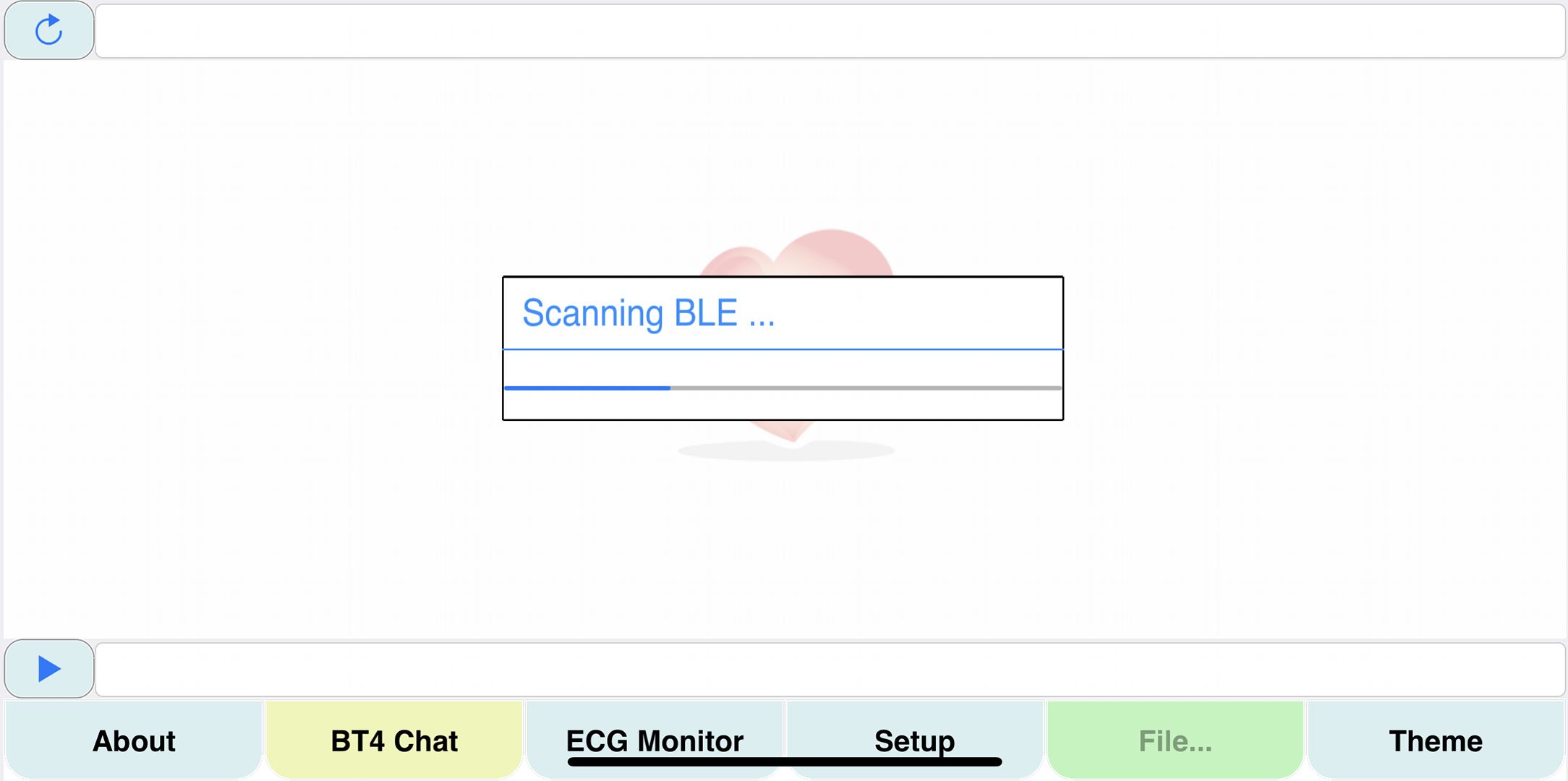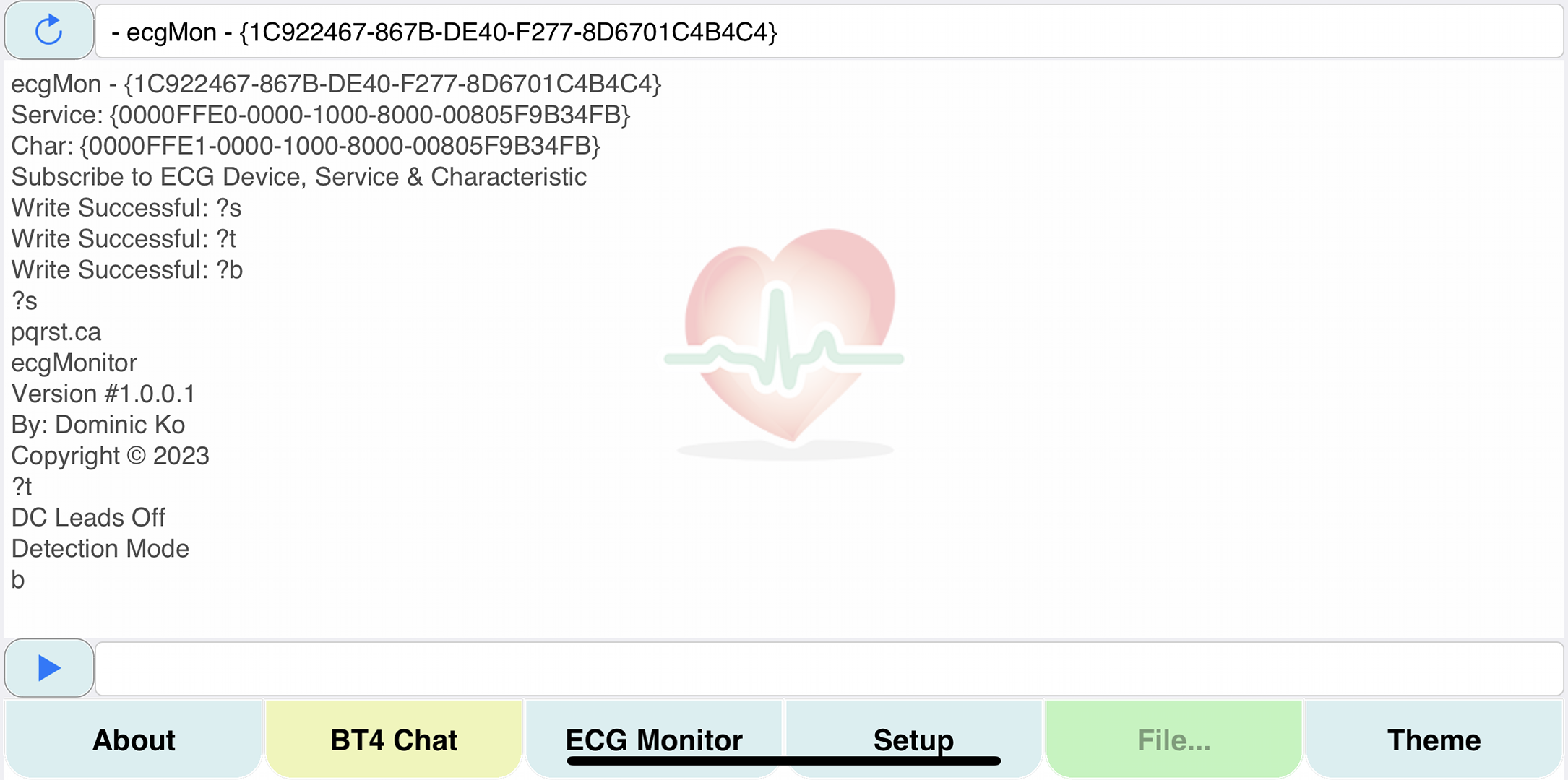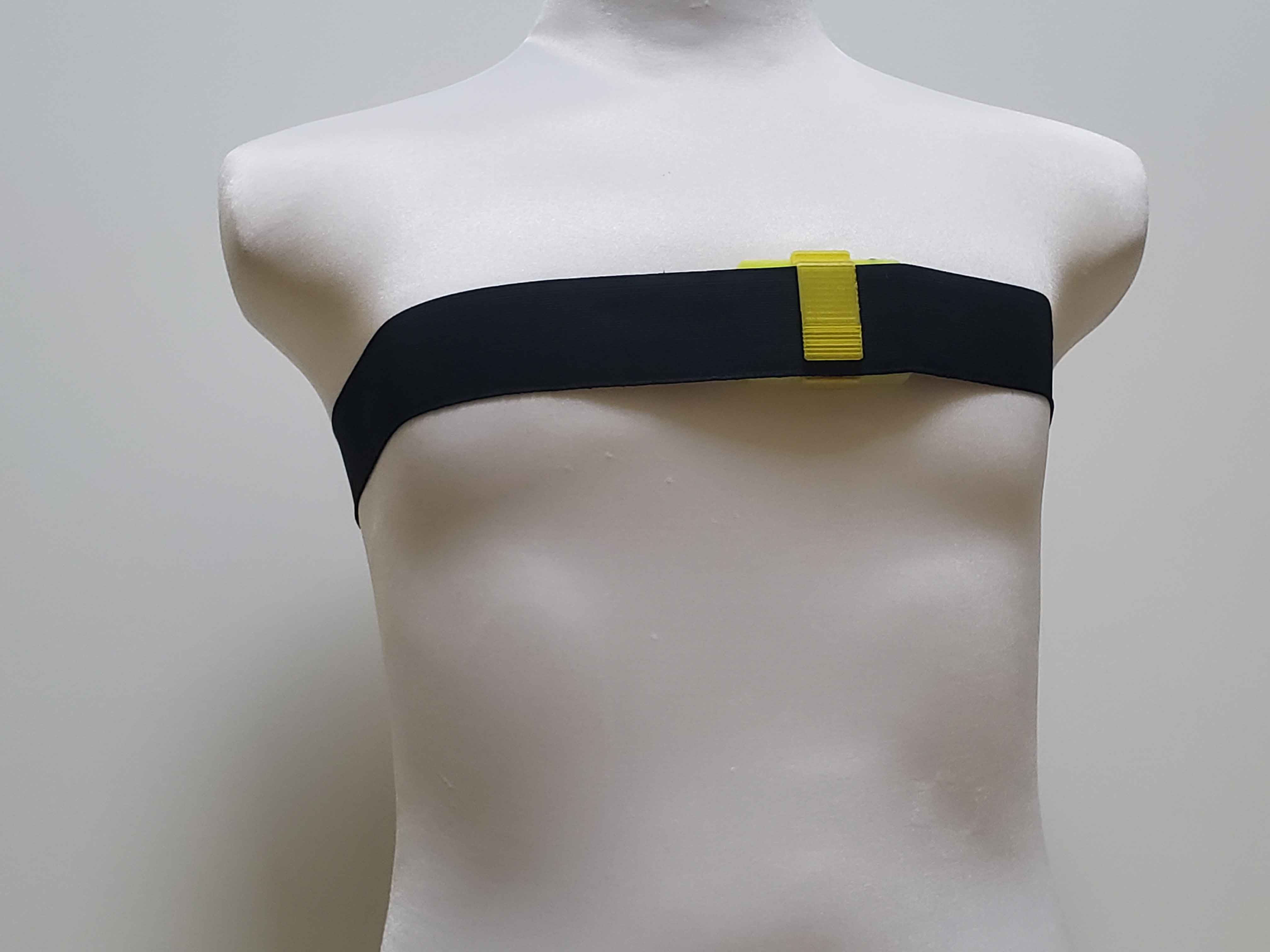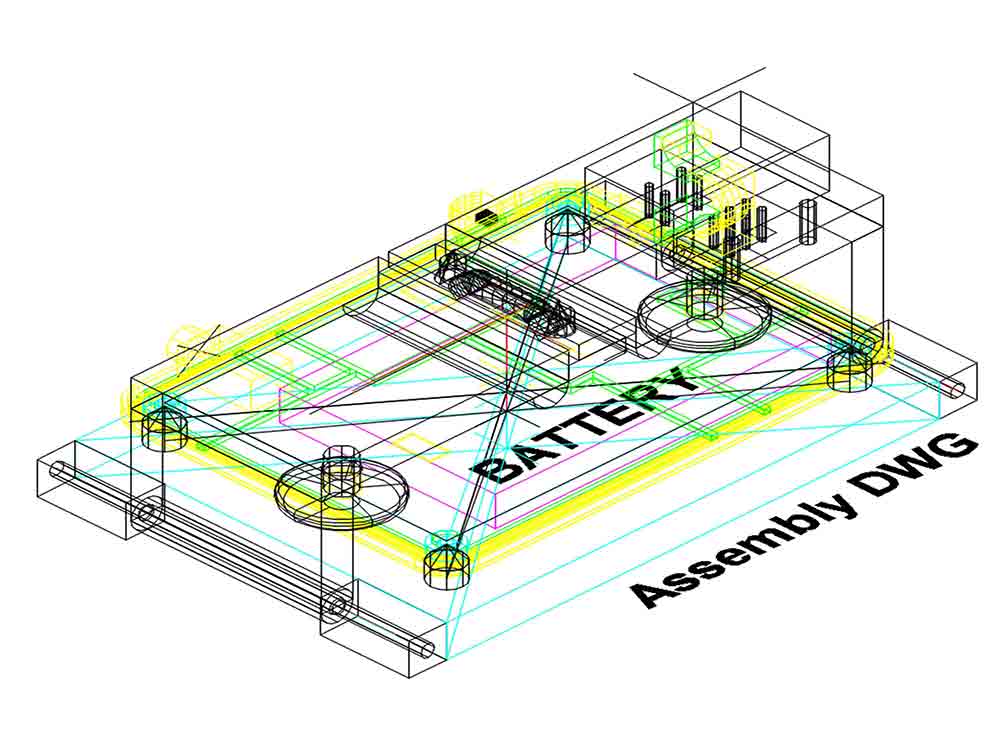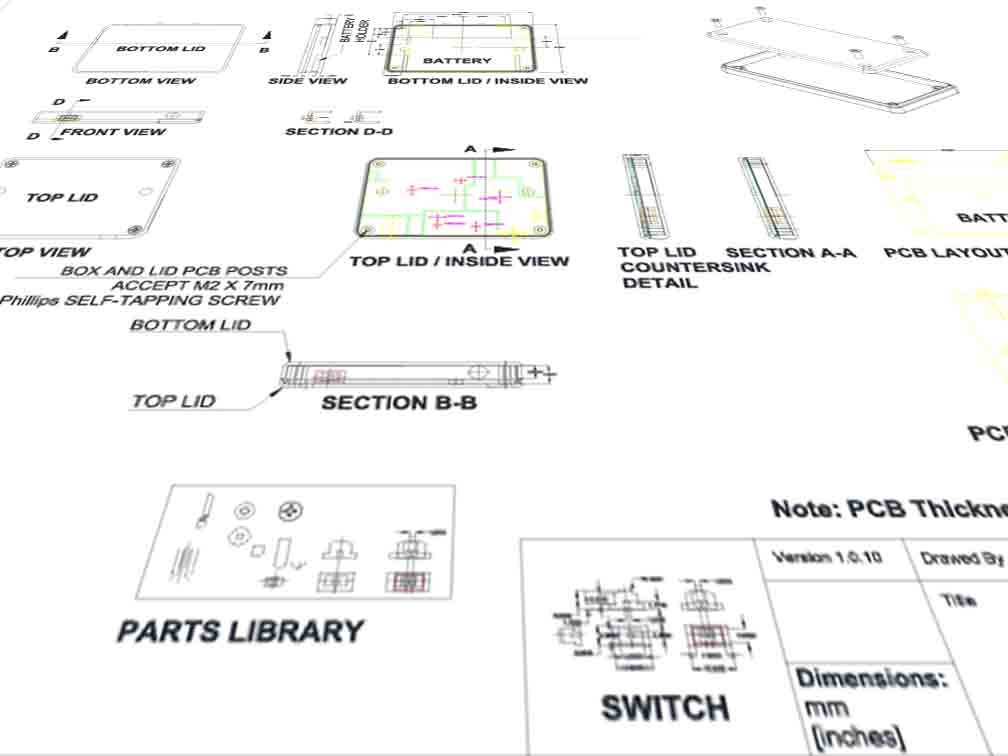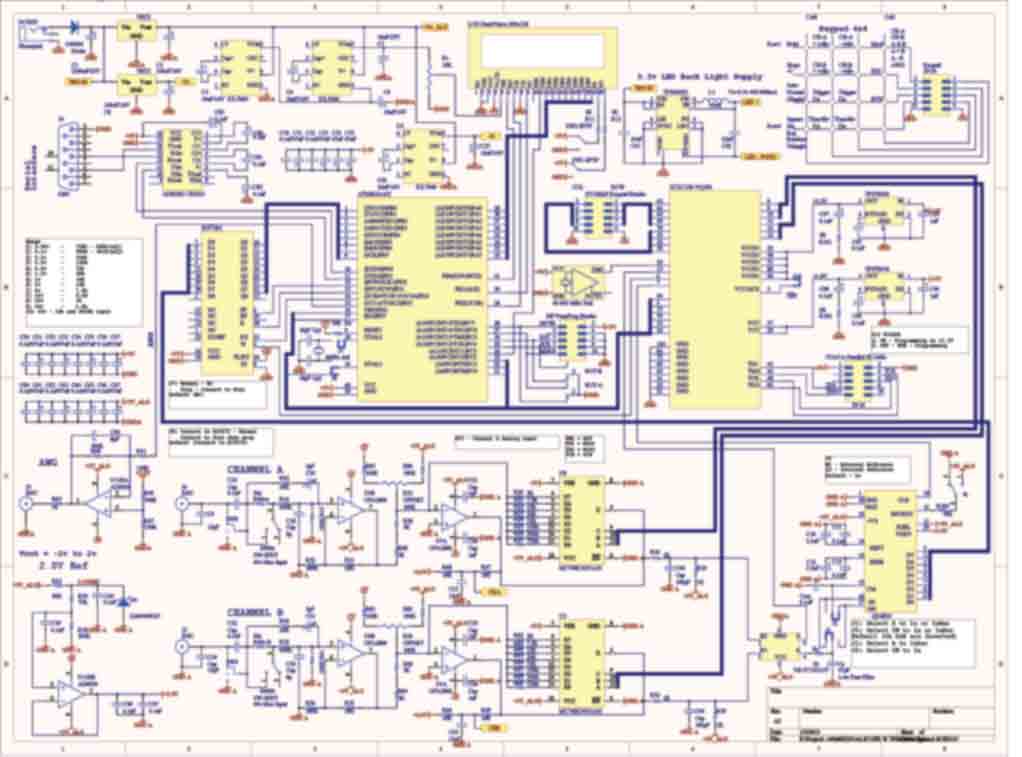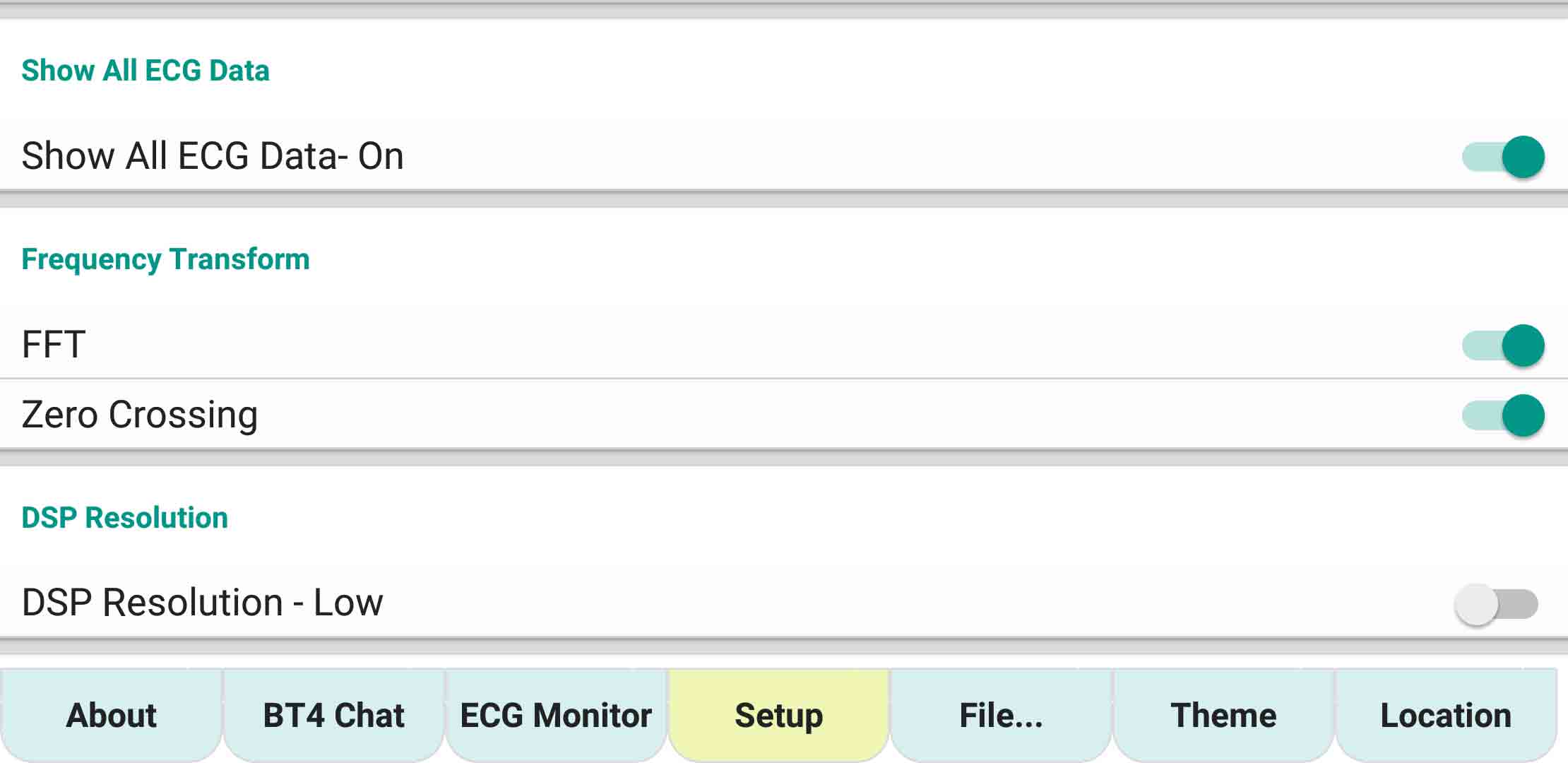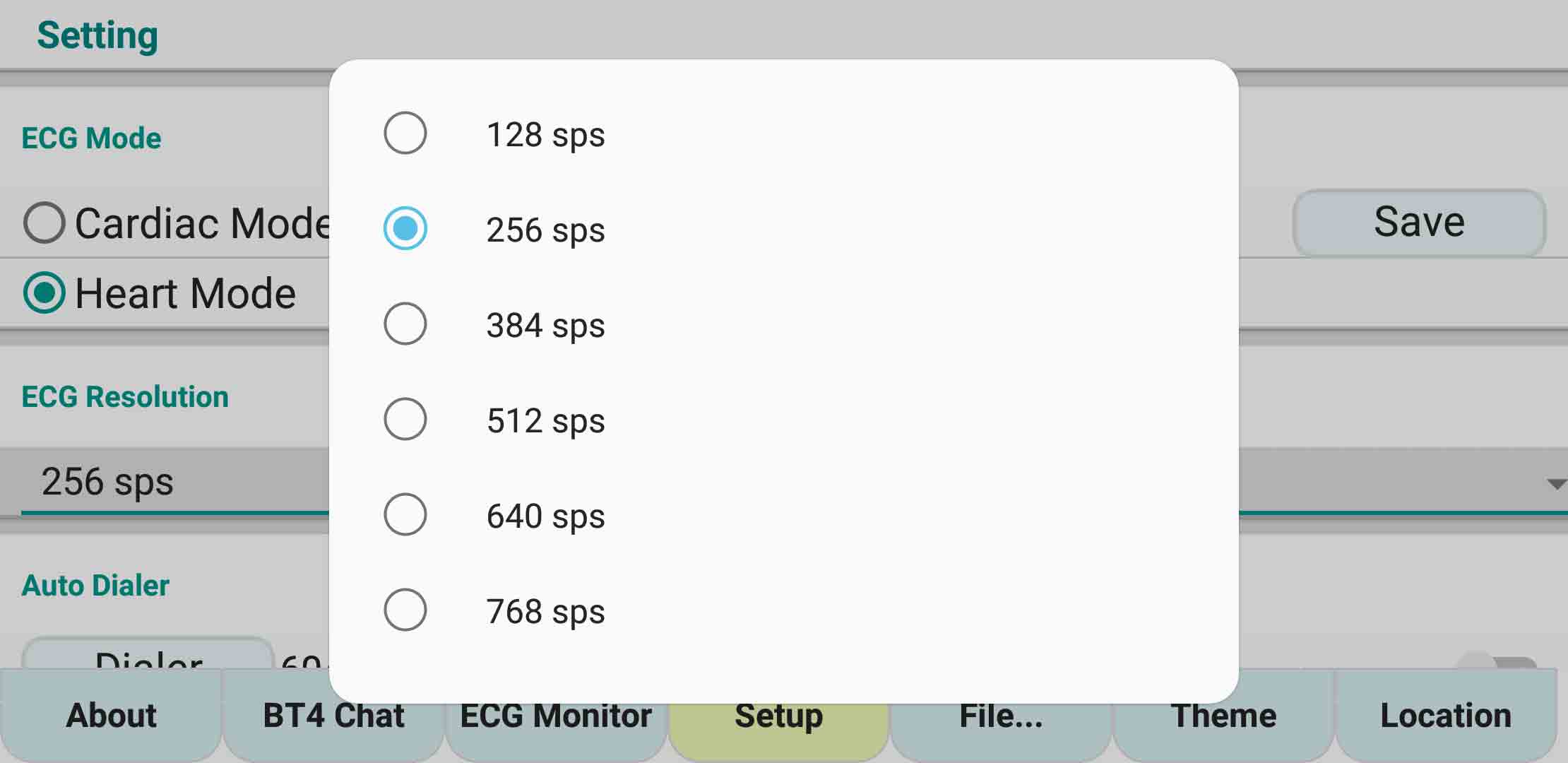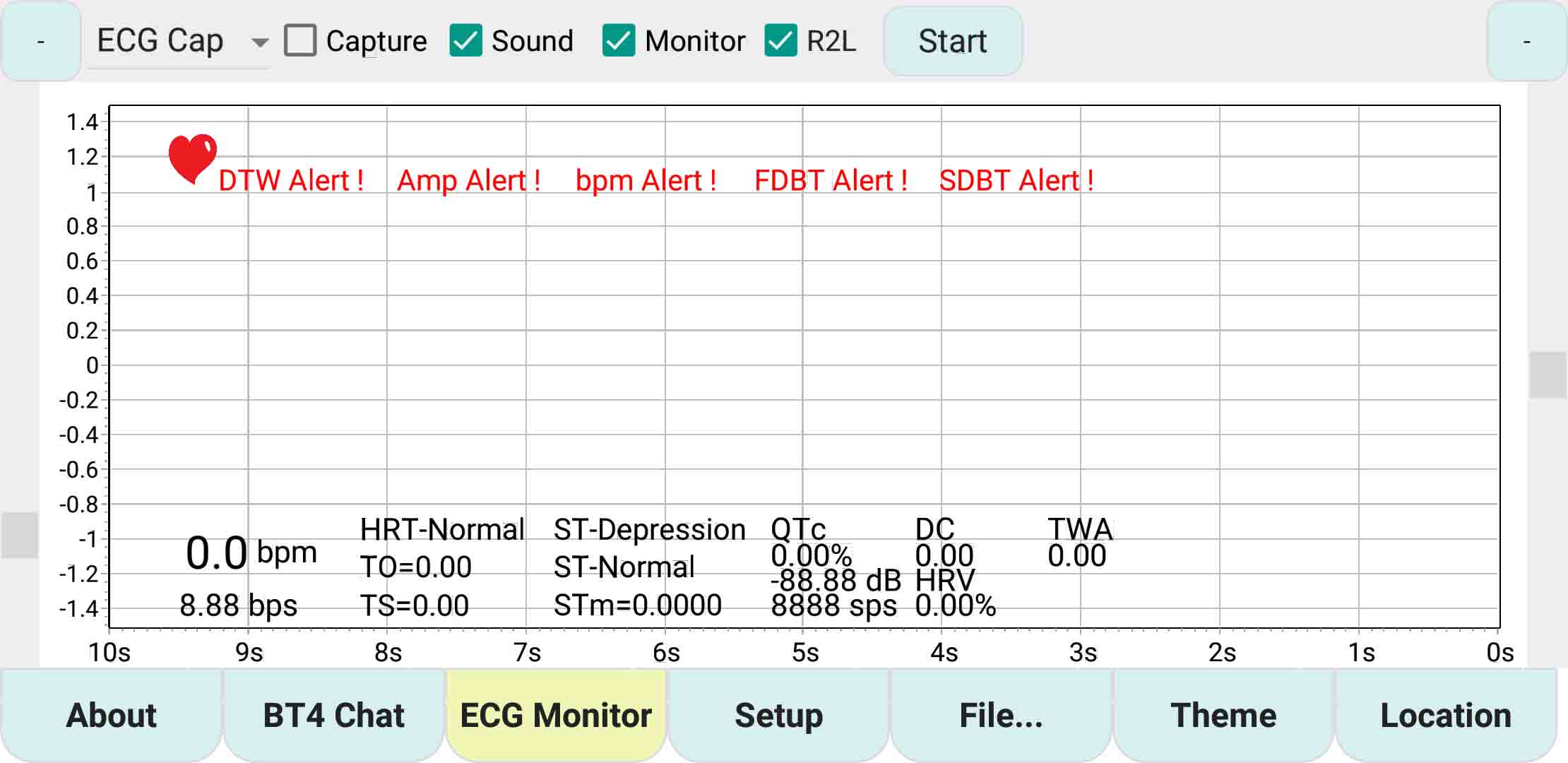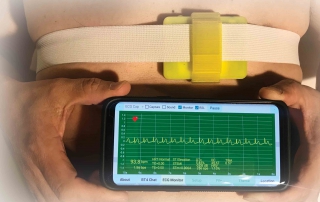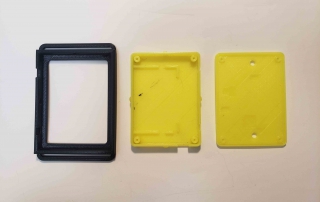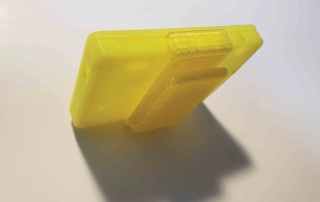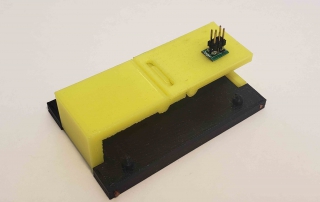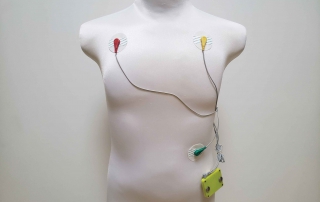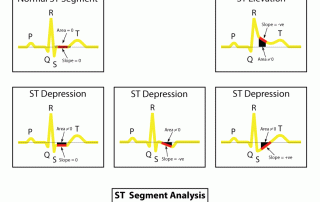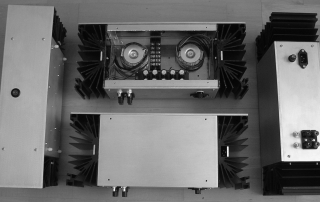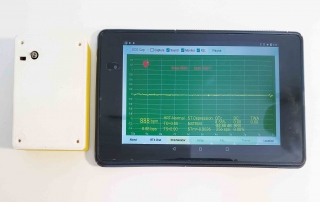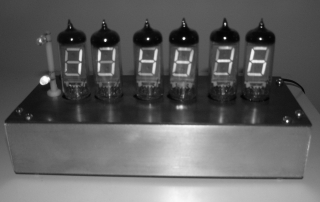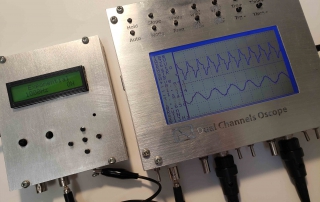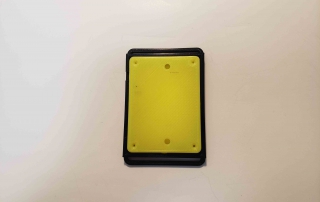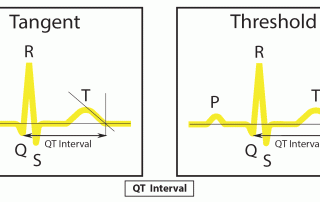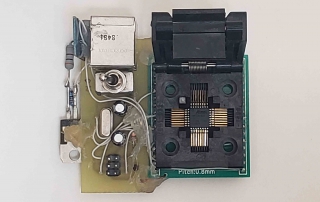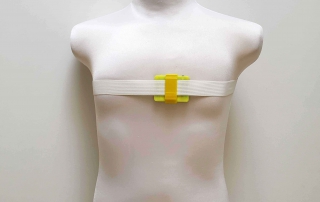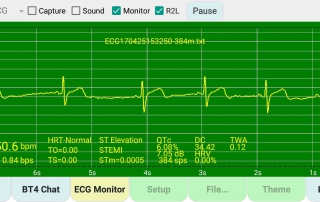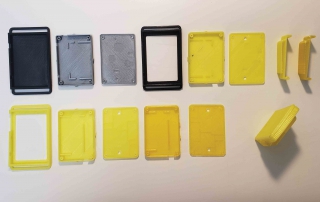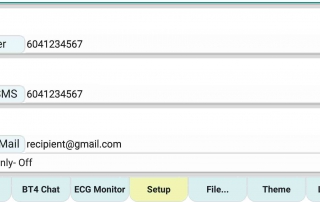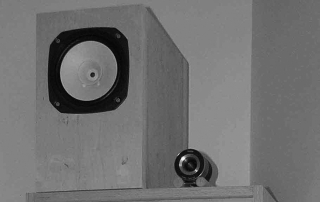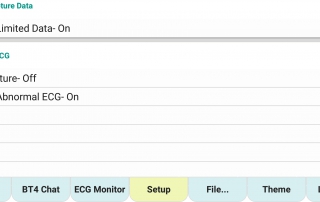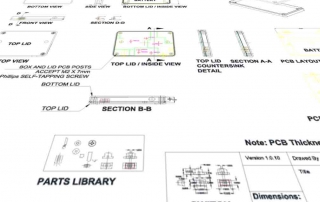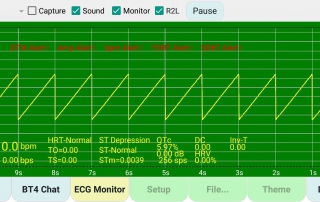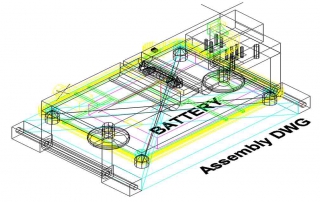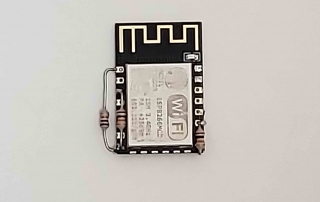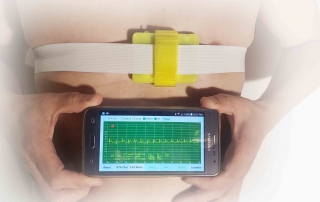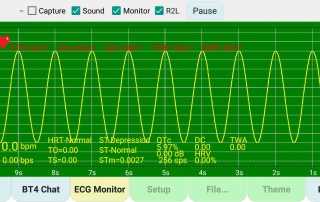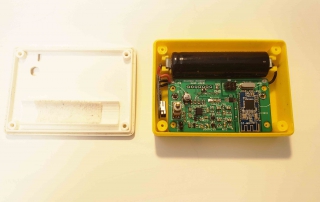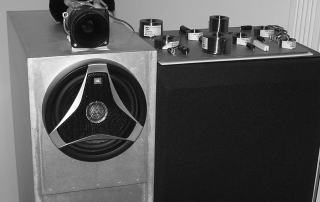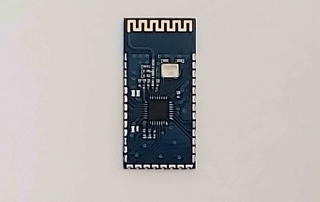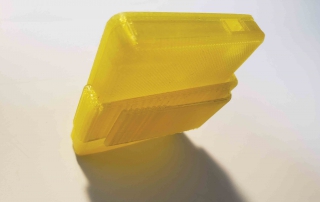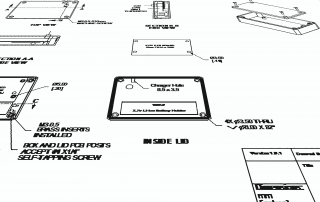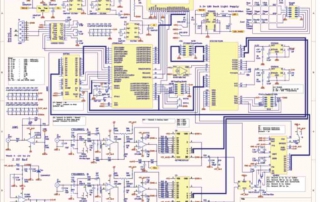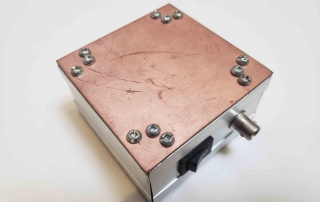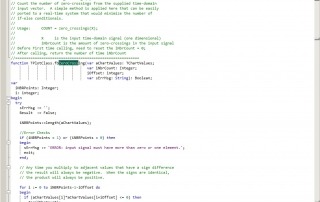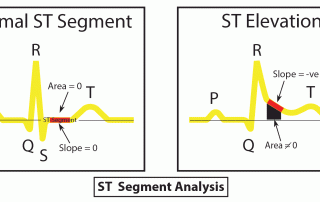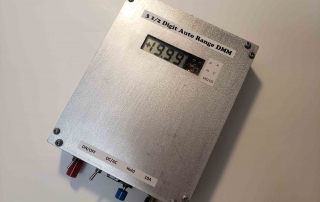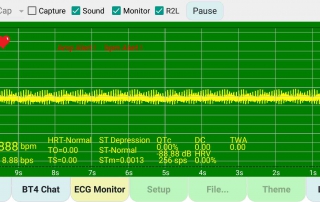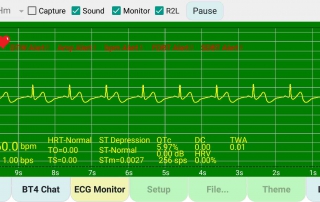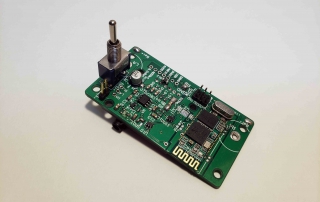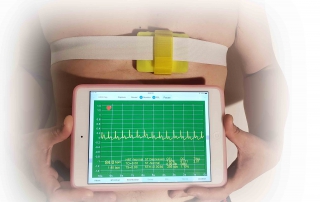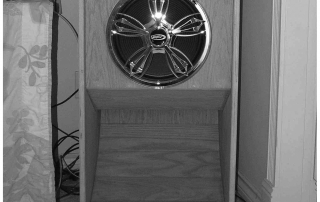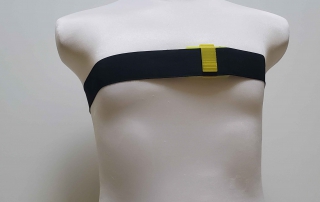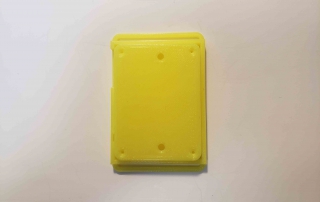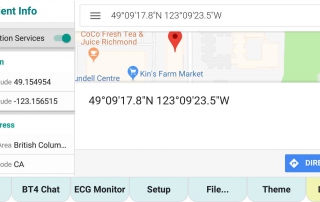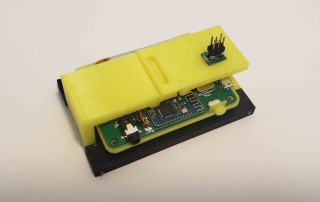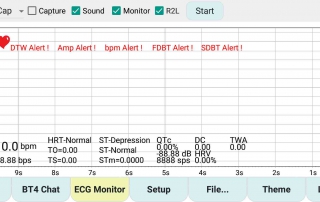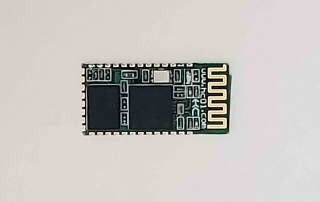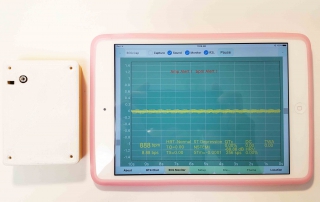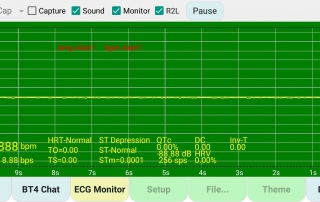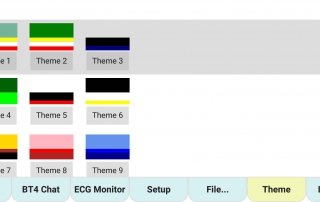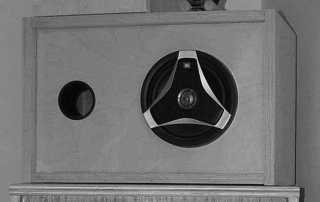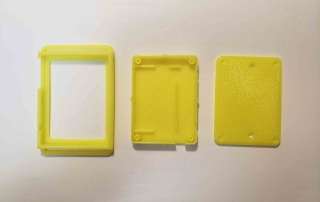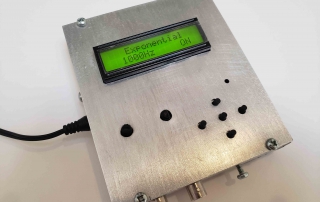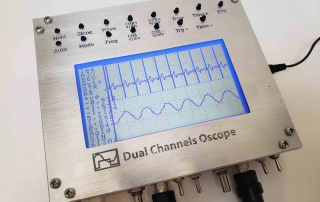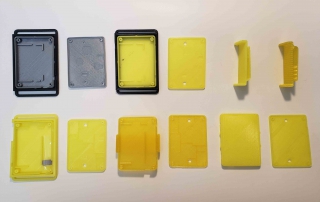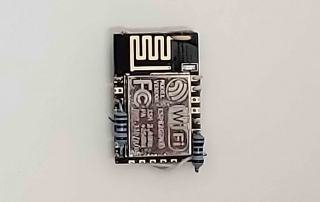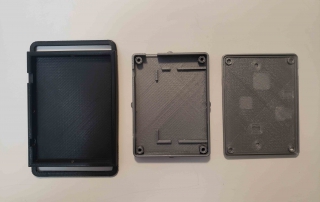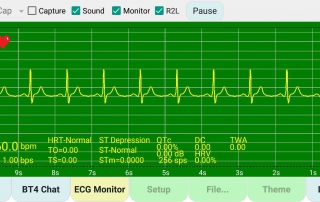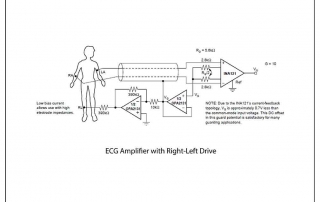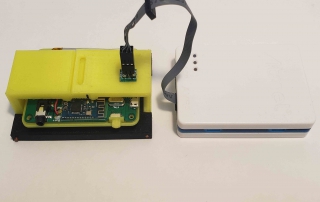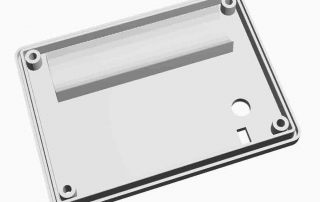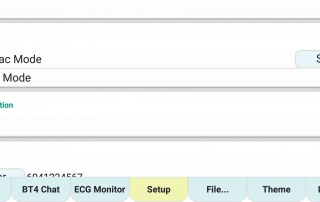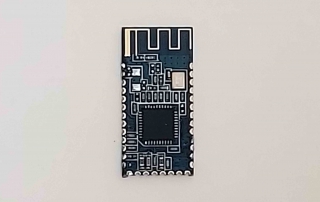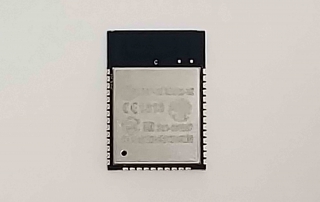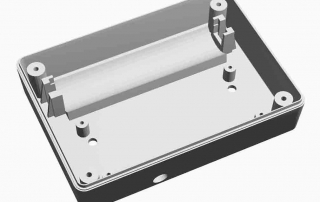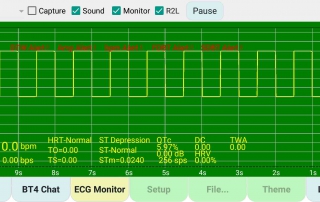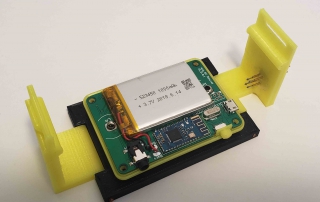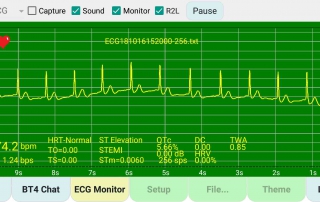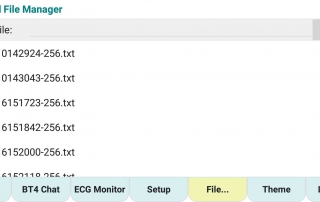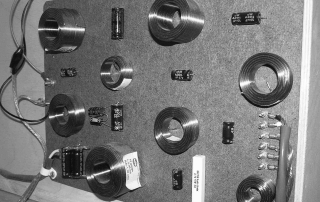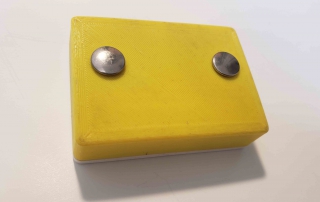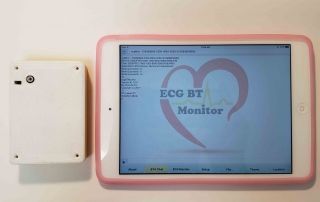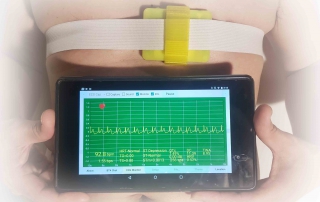10-Year-Journey / ecg Monitor / PQRST Complex
ECG Interpretation of Heart Rhythm
Bluetooth Wearable Devices
PQRST.CA
Table of Movie Contents
- 10-Year-Journey Portfolio
- PQRST.CA ecgMonitor Offical Trailer
- ecgMonitor 10 Years Journey (Part 1)
- ecgMonitor 10 Years Journey (Part 2)
- ecgMonitor 10 Years Journey (Part 3)
- ecg Interpretation 30-40 kinds of ECG/EKG Patterns
- How To Use ecgMonitor
- ecgMonitor – Review (Calibration)
- ecgMonitor – Chassis – Prototype
- ecgMonitor – All Times Trailer
- ecgMonitor – Real Time Measurement
ecgMonitor
PQRST ECG Interpretation Heart Rhythm ECG Monitor Bluetooth
ECG Monitor is a high precision medical, wearable, holter, bluetooth device. App can analyze heart rhythm & pqrst complex in ‘Cardiac‘ & ‘Heart‘ mode.
The device can capture ECG or EKG waveform and run in ‘REAL-TIME’. It is built for iPhone, iPad, Android smartphone and tablet.
There is a built-in 16-bit ADC to captures your ECG data. The app will store the data on your cell phone or tablet with build in ecg interpretation function.
iPhone and iPad: The ADC can measure maximum 384 sampling per second (sps).
Android and tablet: The ADC can measure maximum 512 sampling per second (sps).
It can detect and analyze your abnormal ECG or heart rate. You can send the captured data to your client (e.g. physician, family doctor, members or friends) for further analysis.
The app can measure the followings:-
Beat per minute (bpm)
Beat per second (bps)
Analysis ECG or EKG signals
Heart Rate Variability
Heart Rate Turbulence
ST and QT Analysis
AC/DC Analysis
T-Wave Alternans (TWA)
Users can download the software at Apple Store and Google Market. It is a freeware with lifetime upgrade.
10 Year Journey
Created many tiny projects.
Experience accumulated.
R & D are studying and digging.
Difficult to face and to solve.
Eat an apple a day.
Effort put in work.
Hoping to help everyone.
Result is …
Heart Rhythm Analysis
Sudden Cardiac Death Risk Classification and Advanced ECG Analysis:-
Sudden cardiac death (SCD)
Sudden Cardiac ArrestHeart Attack
Chest Pain from reference
Introduction
T-Wave Alternans (TWA)
Heart Rate Variability (HRV)
Heart Rate Turbulence (HRT)
Deceleration Capacity (DC)
ST Analysis QT Analysis
FDBT & SDBT
Further Reading
Bibliography
48 Hours Holter Monitor
A Holter monitor is a battery-operated portable device to track your heart rhythm.
ECG Monitor can measures and records your heart’s activity (ECG) continuously for 24 to 48 hours or longer.
ECG Monitor
The following heart signals will be measured by ‘Cardiac’ or ‘Heart’ mode via Bluetooth (BT4):-
- Heart Beat – bpm or bps
- HRT – Heart Rate Turbulence
- ST – ST Segment Analysis
- QTc – QT Analysis
- AC / DC – Acceleration and Deceleration Capacity
- HRV – Heart Rate Variability
- TWA – T-Wave Alternans
- Cardiac / Three Leads Electrode Mode SetupKo2019-07-11T16:44:14-07:00
Cardiac / Three Leads Electrode Mode Setup
Cardiac Mode
Cardiac mode is that three lead electrodes are attached to your body. This configuration is designed to track the shape of ECG waveform.
- LA – Place LA electrode to your left shoulder
- RA – Place RA electrode to your right shoulder
- RL – Place RL electrode to your right hip
- ecgMonitor Realtime ECG Galaxy Grand PrimeKo2019-07-11T14:21:41-07:00
ecgMonitor Realtime ECG Galaxy Grand Prime
Heart Mode
Heart mode is that the ECG Monitor will be placed next to your heart. You can do exercise and wear an ECG Monitor to track the ECG waveform.
- Wipe an elastic belt around your chest area.
- Place the ECG Monitor between the elastic and at the center of the chest.
Accuracy: ‘Heart’ mode obtain a less accurate result than ‘Cardiac’ mode.
Because the device distance from the heart is smaller, the heart signal is stronger.
There is a muscle artifact. The muscle artifact will produce a distortion result.
Sudden Cardiac Death
Sudden Cardiac Death is a sudden, unexpected death. A change in heart rhythm of sudden cardiac arrest will cause death. Sudden Cardiac Death occurs in a short period within 1 hour of time. The person has a known or unknown cardiac disease.
Sudden Cardiac Arrest
Sudden cardiac arrest occurs. The electrical system of the heart is malfunctions. The heart rhythm becomes irregular. Heart beats fast. Blood is not delivered to the body.
There is the greatest concern. The blood flow to the brain will reduce in the first few minutes. A person will lose consciousness. Death follows unless emergency treatment begins.
A heart attack is a “circulation” problem. Sudden cardiac arrest is an “electrical” problem.
Sudden cardiac arrest is the abrupt loss of heart function in a person. He or she may or may not have been diagnosed with heart disease. It can come on suddenly, or in the wake of other symptoms. Sudden cardiac arrest is often fatal if appropriate steps aren’t taken immediately.
Heart Attack
Let’s say that you’re stuck in traffic and cars are backed up as far as you can see. It turns out there’s an accident blocking traffic lanes.
This is similar to what happens during a heart attack. Heart Attack is also known as myocardial infarction (MI).
Blood flow to the heart muscle is obstructed. The heart muscle is leading to a loss of blood supply (ischemia). Death is a result for heart tissue.
A heart attack occurs. When an artery supplying your heart with blood and oxygen becomes blocked. Fatty deposits build up over time, forming plaques in your heart’s arteries. If a plaque ruptures, a blood clot can form. The clot block your arteries, causing a heart attack.
pqrst.ca/ecg Monitor/cardiac arrest & Heart Rhythm analysis by pqrst Complex/bluetooth wearable devices/10-Year-Journey
Chest Pain
Heart or blood vessel problems that can cause chest pain. e.g. Heart Attack.
The most common symptom is chest pain. It may feel like tightness, heavy pressure, squeezing, or crushing pain. Swelling (inflammation) in the sac that surrounds the heart (pericarditis) causes pain in the center part of the chest.
When your heart muscle doesn’t get enough oxygen-rich blood, heart attack caused chest pain or discomfort. It may feel like pressure or squeezing in your chest. The discomfort also can occur in your shoulders, arms, neck, jaw, or back.
pqrst.ca/ecg Monitor/cardiac arrest & Heart Rhythm analysis by pqrst Complex/bluetooth wearable devices/10-Year-Journey
Further Reading & Bibliography
Specification
Hardware Specs
1) Microchip ATXMega 8-bit AVR 7.3728Mhz.
2) AD8232 Heart Rate Monitor.
3) Bluetooth 4.0.
4) 16-bit ADC rate: 100kSPS.
5) Built-in USB Charger with Micro B Connectors.
6) DC 5.0V Operation with 3.85v Li-ion battery.
7) Built-in 50/60 Hz Notch Filter.
8) Power Consumption: BT4: 15mA x 3v = 45mW. Maximum 20mA x 3V = 60mW.
9) Signal Strength: -65dBm.
10) Working duration: Approximately 50hrs operation per fully charged.
Software Specs
1) For iOS 10.3 or above (iOS 12.0 Stable Version).
2) For Android 4.4 or above (Recommend Android 6.0 or above, Android 8.0.0 Stable Version).
3) iPhone & iPad with 384sps sampling.
4) Android smart phone & tablet with 512sps sampling.
*** Note: 512sps sampling for Android 8.0 or above.
384sps sampling for Android below 8.0.
Firmware Specs
1) ECG Module (AD8232).
a) Cardiac Mode Capture (3-Lead Electrode Capture). Gain = 1100 db
b) Heart Mode Capture (Next To Heart Capture). Gain = 100 db
c) DC Leads Off Detection.
2) AD8232 is configured with a 0.5 Hz two-pole high-pass filter followed by a two-pole, 40 Hz, low-pass filter. A third electrode is driven for optimum common-mode rejection.
3) Bluetooth 4.0 Transmission is max 115200 baud.
4) Android Smartphone & tablet: Sampling Rate: 100, 128, 200, 256, 300, 384, 512 sps
iPhone & iPad: Sampling Rate: 100, 128, 200, 256, 300, 384, sps
16-bit Sampling per Second (sps).
5) ECG Calibration: 60bpm ECG wave, 60bpm Saw Tooth.
Restriction
1) There is a restriction on BT4 & BT5 in IOS. Transmission is max 115200 baud with 384sps 16-bit Sampling Per Second (sps).
Distortion
IOS 10.3 to 12.0
1) IOS (BT4): Support 100, 128, 200, 256, 300, 384 sps (No Distortion).
2) IOS (BT5): Support 100, 128, 200, 256, 300, 384 sps (No Distortion). Android 4.4 to 8.0
3) Android (BT4): Support 100, 128, 200, 256, 300, 384 sps (No Distortion).
4) Android (BT5): Support 100, 128, 200, 256, 300, 384 sps (No Distortion) in Samsung SW-G960W.
5) Android (BT4): Support 100, 128, 200, 256, 300, 384 sps (Rare Distortion) slow CPU or smartphone or tablet.
Features
ECG Monitor
1) Cardiac Mode Capture (3-Lead Electrode Capture).
2) Heart Mode Capture (Next To Heart Capture).
3) FFT Technology (Fast Fourier Transform).
4) Zero Crossing Technology.
5) Digital Signal Processing.
6) Capture & Analyze ECG signal.
a) Read Heart Beat.
b) Heart Rate Variability (HRV).
c) Deceleration capacity (DC).
d) ST Analysis.
e) QT Analysis.
f) Heart Rate Variability (HRV).
g) T-Wave Alternans (TWA).
7) Abnormal Signal Monitor.
CLIENT CAN DISABLE THE ALL FUNCTIONS BELOW.
a) Capture Abnormal ECG.
b) DTW.
c) Amplitude (AMP) – Trigger and Alert.
d) beat per minute (bpm) – Trigger and Alert.
e) First Derivative Based Technique (FDBT) – Trigger and Alert.
f) Second Derivative Based Technique (SDBT) – Trigger and Alert.
g) Alert – AMP & bpm alert function.
g.1) Where ‘Alert’ function will display warning only.
8) File Manager/Read/Open/Save ECG file in text format.
a) The file ecgXXXXXXXX.txt will save.
b) Capture Period is default in 5 minutes.
9) Sampling Rate: 100, 128, 200, 256, 300, 384, 512 sps for Android Smartphone & tablet.
10) Sampling Rate: 100, 128, 200, 256, 300, 384, sps for iPhone & iPad.
11) Built-in Sample: ECG Simulation, ECG Human, Sin, Exp, Square & Saw Tooth.
12) ECG Calibration: 60bpm ECG wave, 60bpm Saw Tooth.
ECG Monitor Resolution
Android ONLY
BT2: 128, 256, 384, 512, 640, 768, 896, 1024 and 1152 sps (No Distortion)
Android and IOS
BT4: 128, 256, 384 sps (No Distortion)
BT4: 512, 640, 768, 896, 1024 and 1152 sps (Distortion)
BT5 HM10: 128, 256 (No Distortion). 100, 200 & 300 sps are added
BT5 HM05: 128, 256, 384, 512 sps (No Distortion) in Samsung SW-G960W
BT5 HM05: 128, 256, 384 sps (No Distortion) in iPad and iPhone OS 9.3 to 11.4
BT5 HM05: 128, 256, 384 sps (Rare Distortion) in Android for slow machine
ECG Noise and Precaution
DIFFERENT NOISES IN ECG SIGNAL
1) Power line interference
2) Electromyogram (EMG) Noise
3) Baseline Wander
4) Electrode Contact Noise
5) Motion artifacts
DIFFERENT ECG SIGNAL DENOISING TECHNIQUES
1) IIR Notch filter
2) FIR Filtering
3) Adaptive filter
4) Discrete Wavelet Transform (DWT)
5) Bionic Wavelet Transform (BWT)
6) Filtered Residue (FR) Method
PRECAUTION
1) Power line interference – 50Hz / 60Hz Passive Notch filter is applied.
2) Electrode Contact Noise – Using rubbing alcohol to rub the chest skin and electrode.
A 0.5 Hz two-pole high-pass filter followed by a two-pole, 40 Hz, low-pass filter. A third electrode is driven for optimum common-mode rejection.
ECG Performance Test
Android Test on Speed Test
Device Name Model OS Time Delay Distortion Restart CPU
Nexus7 Nexus 7 OS 6.0.1 3s-5s NO NO Quad-core 1.2 GHz Cortex-A9
Samsung Grand Prime SM-G530W OS 5.1.1 3s-5s NO NO Quad-core 1.2 GHz Cortex-A53
Samsung Galaxy Note Edge SM-N915G OS 4.4.4 1s-3s NO NO Quad-core 2.7 GHz Krait 450
Samsung Galaxy Tab 4 SM-T230 OS 4.4.2 3s-5s NO NO Quad-core 1.2 GHz
Samsung Galaxy Tab 3 SM-T310 OS 4.4.2 5s-10s YES NO Dual-core 1.5 GHz Cortex-A9
Huawei Honour KIW-L24 OS 6.0.1 0s NO YES Octa-core (4×1.2 GHz Cortex-A53 & 4×1.5 GHz Cortex-A53)
Huawei MYA-L23 OS 6.0 1s-3s Mint YES Quad-core 1.4 GHz Cortex-A53
Samsung S9 SM-G960W OS 8.0.0 0s NO YES Octa-core (4×2.7 GHz Mongoose M3 & 4×1.8 GHz Cortex-A55)
Comment: ProgressBar has a bug in 4.XX. It does not working properly in loading data!!!
1) Samsung Galaxy Note Edge
2) Samsung Galaxy Tab 4
10-Year-Journey / ecg Monitor / PQRST Complex ECG Interpretation of Heart Rhythm by ECGMonitor – pqrst.ca Bluetooth Wearable Devices
Simulation Test
iPad Simulation on Difference OS
iPad Air 10.3.1 OK
iPad Air 10.2 OK
iPad Air 2 9.3 OK
iPad 2 10.3 OK
iPad 2 9.3 OK
iPad Retina 9.3 OK
iPad Pro 10.3 Fail
iPhone Simulation on Difference OS
iPhone 7+ 10.3.1 OK
iPhone 7+ 10.2 OK
iPhone 7 10.3.1 OK
iPhone 6+ 10.3.1 OK
iPhone 6+ 10.2 OK
iPhone 6+ 9.3 OK
iPhone 6s+ 10.3.1 OK
iPhone 6s+ 10.2 OK
iPhone 6s+ 9.3 OK
iPhone 6 10.3.1 OK
iPhone 6 10.2 OK
iPhone 6 9.3 OK
iPhone SE 10.3.1 OK
iPhone SE 10.2 OK
iPhone SE 10.2 OK
iPhone 5s 10.3 OK
iPhone 5s 10.2 OK
iPhone 5s 9.3 OK
iPhone 5 10.3.1 OK
iPhone 5 10.2 OK
iPhone 5 9.3 OK
10-Year-Journey / ecg Monitor / PQRST Complex ECG Interpretation of Heart Rhythm by ECGMonitor – pqrst.ca Bluetooth Wearable Devices
Transmission Test
*** There is a restriction on BT4 & BT5 in IOS!!!
Resolution & Comment:
IOS (BT4): Support 128, 256, 384 sps (No Distortion)
IOS (BT5): Support 128, 256, 384 sps (No Distortion)
Android (BT5 HM10): Support 128, 256, 300 sps (No Distortion)
(BT5 HM05): 128, 256, 384, 512 sps (No Distortion) in Samsung SW-G960W
(BT5 HM05): 128, 256, 384 sps (No Distortion) in iPad and iPhone OS 9.3 to 11.4
(BT5 HM05): 128, 256, 384 sps (Rare Distortion) in Android for slow machine.
Android (BT4): Support 128, 256, 384 sps (No Distortion)
Android (BT2): Support 128, 256, 384, 512, 640, 768, 896, 1024 and 1152 sps (No Distortion)
IOS Device – 64 bits
iPhone 8+ IOS12.0 BT5 Reception OK
iPhone 6S+ IOS11.4 Reception OK
iPhone 6+ IOS11.3 Reception OK
iPhone SE IOS10.3 BT4 Reception (Short Distance 5-10ft)
iPad AIR IOS10.3 Reception OK
10-Year-Journey / ecg Monitor / PQRST Complex ECG Interpretation of Heart Rhythm by ECGMonitor – pqrst.ca Bluetooth Wearable Devices pqrst ecg monitor pqrst.ca ecgMnoitor pqrst ecg monitor pqrst.ca ecgMnoitor pqrst ecg monitor pqrst.ca ecgMnoitor pqrst ecg monitor pqrst.ca ecgMnoitor pqrst ecg monitor pqrst.ca ecgMnoitor pqrst ecg monitor pqrst.ca ecgMnoitor pqrst ecg monitor pqrst.ca ecgMnoitor pqrst ecg monitor pqrst.ca ecgMnoitor pqrst ecg monitor pqrst.ca ecgMnoitor pqrst ecg monitor pqrst.ca ecgMnoitor pqrst ecg monitor pqrst.ca ecgMnoitor pqrst ecg monitor pqrst.ca ecgMnoitor pqrst ecg monitor pqrst.ca ecgMnoitor pqrst ecg monitor pqrst.ca ecgMnoitor
Safety Information
Warning: Please read the below information carefully.
THE DATA SHOULD NOT BE USED AS A SOLE MEANS FOR DETERMINING A PATIENT’S DIAGNOSIS. ECG analysis and interpretation are for reference only.
Our company is not responsible and liable for any damages or injuries caused from using our products, services, or any information provided on our website or mobile app.
Device captures and presents data reflecting a patient’s physiological condition that when reviewed by a trained physician or clinician can be useful in determining a diagnosis. Please consult with your physician or other health care professional about patient’s health.
Users are expected to be technically knowledgeable about medical procedures and patient care, and adequately trained in the use of this device. Inadequate knowledge or training could result in increased risk of harm to users, patients and bystanders, or damage to the device.
10-Year-Journey / ecg Monitor / PQRST Complex ECG Interpretation of Heart Rhythm by ECGMonitor – pqrst.ca Bluetooth Wearable Devices
10-Year-Journey / ecg Monitor / PQRST Complex ECG Interpretation of Heart Rhythm by ECGMonitor – pqrst.ca Bluetooth Wearable Devices
ECG Research & Development
Reference
Software Languages: Delphi Pascal Firmware Language: C++ Hardware Design: AutoCad Firmware Design Studio: Atmel Studio 7 Design Library Reference: Delphi Worlds
10-Year-Journey / ecg Monitor / PQRST Complex ECG Interpretation of Heart Rhythm by ECGMonitor – pqrst.ca Bluetooth Wearable Devices
List of ECG Interpretation by ECGMonitor:
- Normal Sinus Rhythm
- Downsloping – Myocardial Ischemia (NSTEMI)
- Horizontal Sloping – Myocardial Ischemia
- Upsloping – Depression
- Downsloping Inverted-T
- Inverted-T
- Positive S & Prolong T
- Positive Horizontal ST & Inverted T
- STEMI Ext Q Normalize ST
- STEMI Ext Q Normalize ST Inverted T
- STEMI Ext Q Positive-T
- STEMI Inverted-T
- STEMI Positive-T
- ST Recovery Inverted T
- ST Recovery Normal T Persistent Q
- Flat T
- BiPhasic P
- Flat P
- Giant P
- Inverted P
- Asystole
- Sinus Arrhythmia
- Sinus Bradycardia
- Sinus Tachycardia
- Sinus Arrest or Pause
- Sinus Flutter
- Atrial Fibrillation
- Idioventricular Rhythm
- Premature Ventricular Contraction
- Supraventricular Tachycardia
- Ventricular Tachycardia
- First Degree AV Block
- Second Degree AV Block
- Wolff Parkinson White
- Ventricular Flutter
- Osborn Waves
- Ventricular Fibrillation
- Left Bundle Branch Block (LBBB)
- Left Ventricular Hypertrophy (LVH)
- Right Bundle Branch Block (RBBB)
- Right Ventricular Hypertrophy (RVH)
心電圖解釋目錄
DIY Project Summary
- Prototype ecg device
- Simple Circuit from www.ti.com
- Dual Channels 10W Class-A Power Amplifier
- 4th Order 3 Way Crossover
- Fostex Spiral Horn Speaker with Crossover
- Back Rear Loaded Horn Bass Speaker
- Fostex Mid-Range Speaker
- Vintage DG10 7-Segment Vacuum Florescent Tubes Clock
- Vintage IV12 7-Segment Vacuum Florescent Tubes Clock
- 3-1/2 Digit Auto Range DMM from Motorola MC14433
- Electronic Component Tester
- Hand Held Oscilloscope
- Signal Generator
- Dual Channel Oscilloscope
- Dual Channels Oscilloscope Circuit
ECG – R & D
- Sudden Cardiac Death (SCD)
- Sudden Cardiac Arrest
- Heart Attack
- Chest Pain
- Heart Rhythm
- PQRST Wave Complex
- Heart Rate Variability (HRV)
- ST Analysis
- QT Analysis
- Heart Rate Turbulence (HRT)
- Deceleration Capacity (DC) and Acceleration Capacity (AC)
- T-Wave Alternans (TWA)
- First & Second Derivative Based Technique
- Fast Fourier Transformation
- Zero Crossing Technology
Software Design
- ECG Monitor Main Title
- Bluetooth 4.0 Scanner
- Bluetooth Logon
- Monitor Chart
- ECG Capture, Human, Simulation, SIN, EXP, SQR, TRI
- Setting – Cardiac and Heart Mode
- Capture Resolution Selection
- Abnormal ECG Monitoring
- Frequency Transformation
- File Manager
- Theme Selection
- Monitor Chart/ECG Capture
Product Evaluation
Final Stage
- Chassis Design/STL 3D Printing
- Bottom & Top Lid Design
- ECG Programmer Design
- Programmer/STL 3D Printing
- Programmer & ecgMonitor Assembly
- Final Product Assembly
- Debug and Test Run
- ECG Capture, Human, Simulation, SIN, EXP, SQR, TRI
- Pilot Run and Final Test
- Cardiac Mode (Three-Electrode Mode)
- Heart Mode
- Final Test on Samsung Smartphone
- Final Test on Android Tablet
- Final Test on Samsung S9
- Final Test on iPad
- Final Test on iPhone
- Web Design & Publishing
10-Year-Journey / ecg Monitor / PQRST Complex ECG Interpretation of Heart Rhythm by ECGMonitor – pqrst.ca Bluetooth Wearable Devices



